Southeastern Archaeology Exam II
1/84
Earn XP
Description and Tags
The late archaic period and the woodland period
Name | Mastery | Learn | Test | Matching | Spaced |
|---|
No study sessions yet.
85 Terms
Soapstone Vessels at Poverty Point in Louisiana were probably imported from ?
The Southeastern Appalachian Region
Middle Archaic period ritual exchange networks included all of the following EXCEPT?
Quarts and quartzite morrow mountain projectile points
The first evidence for earthen mound construction dates to the?
Middle archaic period
The Poverty Point mounds complex in northeastern Louisiana was established during the ?
Late Archaic period
Societal connections in Middle Archaic period mound construction are most evident in:
Construction using similar geometric principles and units of measure
Are Shell Mound Archaic Sites are located in the?
Interior Lowlands of the Midsouth
At the Iddins site, hundreds of notched cobbles are thought to have been:
net weights for fishing
The earliest dated pottery in the Southeast, Stallings fiber-tempered ware, first appears on the South Atlantic coasts about:
4800 Years bp
Which of the following statements is true for the Poverty Point site?
None of the above
Claassen (2010) has hypothesized that the large Shell Mound Archaic sites are:
Ritual Sites for dispersed groups
According to Anderson and Sassaman, pottery became widespread in the Southeast by:
2700 years bp(700 B.C)
During the Early Woodland period, which of the following is important to Southeastern native subsistence?
The eastern agricultural complex
According to Anderson and Sassaman, the first maize is documented in the Southeast at approximately:
1800 years bp
A defining feature of the southeastern Middle Woodland period is:
spread of Hopewellian ceremonialism
Bow and arrow technology becomes important and widespread in the Southeast during the:
late woodland period
Maize first becomes common in the Southeastern United States about:
Ad 900(1100 years bp)
Anderson and Sassaman suggest that Woodland period worldviews regarded land as the ___________ of labor.
Subject
Which area of the Southeast appears to have been most heavily involved in the domestication and cultivation of native seed crops (Eastern Agricultural Complex)?
the MidSouth (north of the lower Mississippi Valley and West of the Appalachians)
Biltmore Mound is identified as a ______________________
Hopewellian platform mound
Kimball, et al., argue that the the variously colored mound stages, the ditch, the mound structure, and the central ritual post at Biltmore represent:
the “axis” Mundi
Societies with central communities, temple mounds with plazas, and reliance on maize agriculture first appear in the Southeast about __________ .
AD 900 (1100 yrs bp)
Corn (maize) production is first documented in the American Bottom during the ______________ period:
middle woodland
The Medieval Warm Period, a climatic span that favored the spread of agriculture, spanned approximately ____________________.
AD 800-AD 1200 (1200 yrs bp-800 yr bp)
At its peak around AD 1100, Cahokia was home to about __________________ people.
15,000
Archaeologists infer personal status in Mississippian societies through:
all of these
5800 - 3000 Cal yr. Bp
the first pottery in North America → continued trend of increasing population and sedentism
Roughly modern environmental conditions
broad spectrum hunting and gathering
projectile points with broad blades and stems
fiber-tempered pottery(ca. 5000 cal yr bp)
soapstone bowls post-date pottery(400 cal yr bp)
expanded mound building in some places, possible cultural diversification
continued and expanded long distance exchange
more evidence for status difference in burials
The Late Archaic Period
At the height of the Mississippian period, Southeastern indigenous populations were probably totaled around:
a. 250,000
b. 10,000,000
c. 1,000,000
d. 75,000
1,000,000
The span of the Woodland period is approximately:
a. 2200 B.C- A.D. 100
b. 200 B.C- A.D 800
c. 1000-A.D 1500
d. 1200 B.C- A.D. 1000
1200 B.C.-A.D. 1000
Eating acorns, particularly as a staple food, is called ______________.
balanophagy
Pits filled with stones, and used for cooking are called _______________.
Earth ovens
Poverty Point “objects” (those little clay cubes/balls/other shapes) were most likely used for _______________.
Cooking
The term “Adena” describes a ritual/mortuary complex that dates to the _________ _________ period.
early woodland
The jumbling or overlaying of archaeological contexts from different times on a single surface is called a _______________. The same term is used for overwritten manuscripts, where messages from different times are superimposed.
palimpsest
Bow and arrow technology shows up in the Southeast during the _____ ___________ period.
woodland
The _____ axe form shows up during the Early Woodland period, and persists through European contact. It was a significant technology that allowed actual chopping of trees.
grooved
Pigeon pottery Stamped vessels with podes (legs/feet) were probably specialized containers for ______________.
storage or cooking
The first domesticated EAC crop was _____________.
Squash(Cucurbita pepo ssp. ovifera
Kimball’s microwear analyses of Flint Ridge chalcedony bladelets shows that they were used to cut _______.
meat or fresh hide
Kimball suggests that sharpened bone needles/awls found at Biltmore were used for ____________.
tattoos
Mica found in Hopewellian contexts in Ohio likely came from the ____________________ region.
blue-ridge region
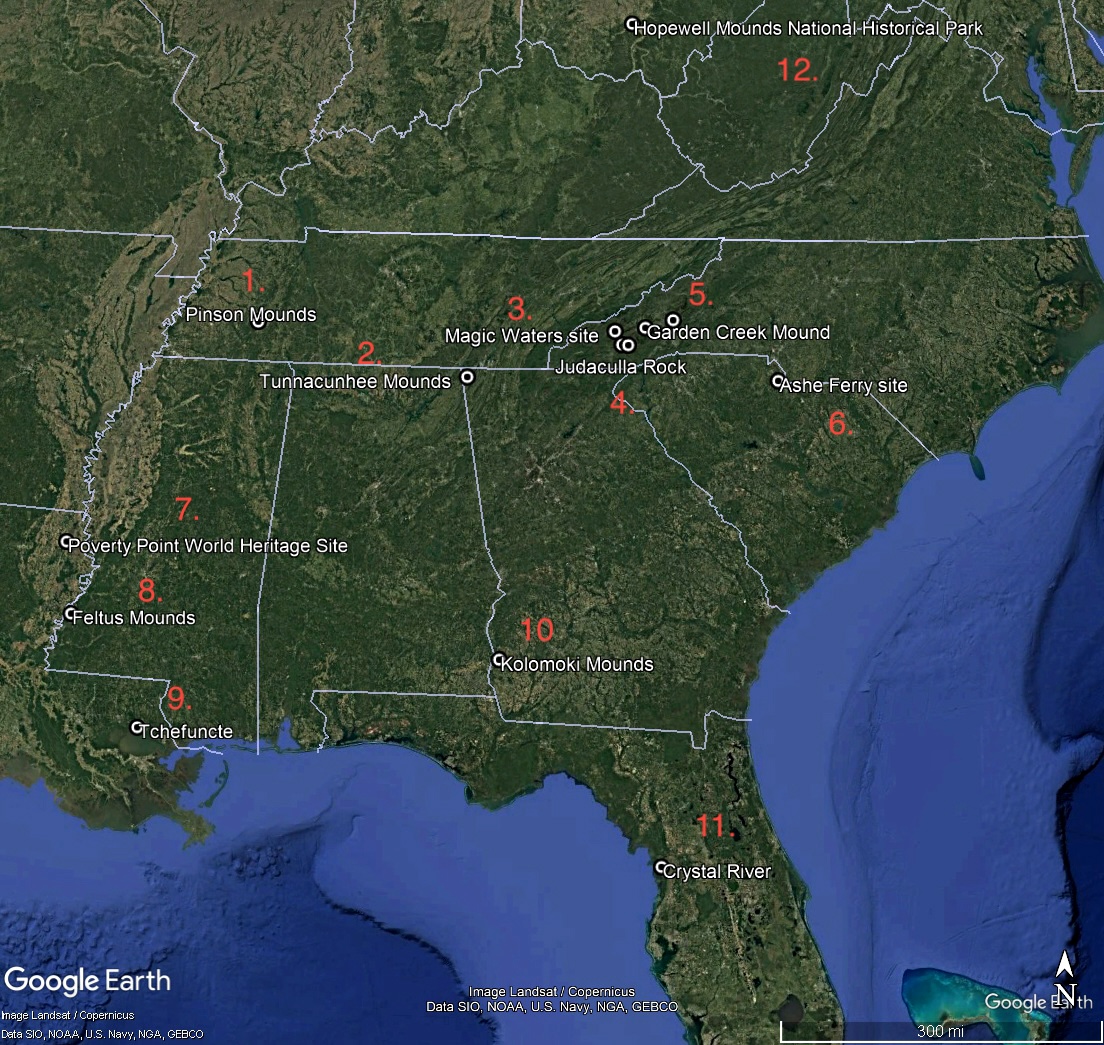
what is number 1.?
Pinson Mounds

what is number 2.?
Tunnacunhee mounds
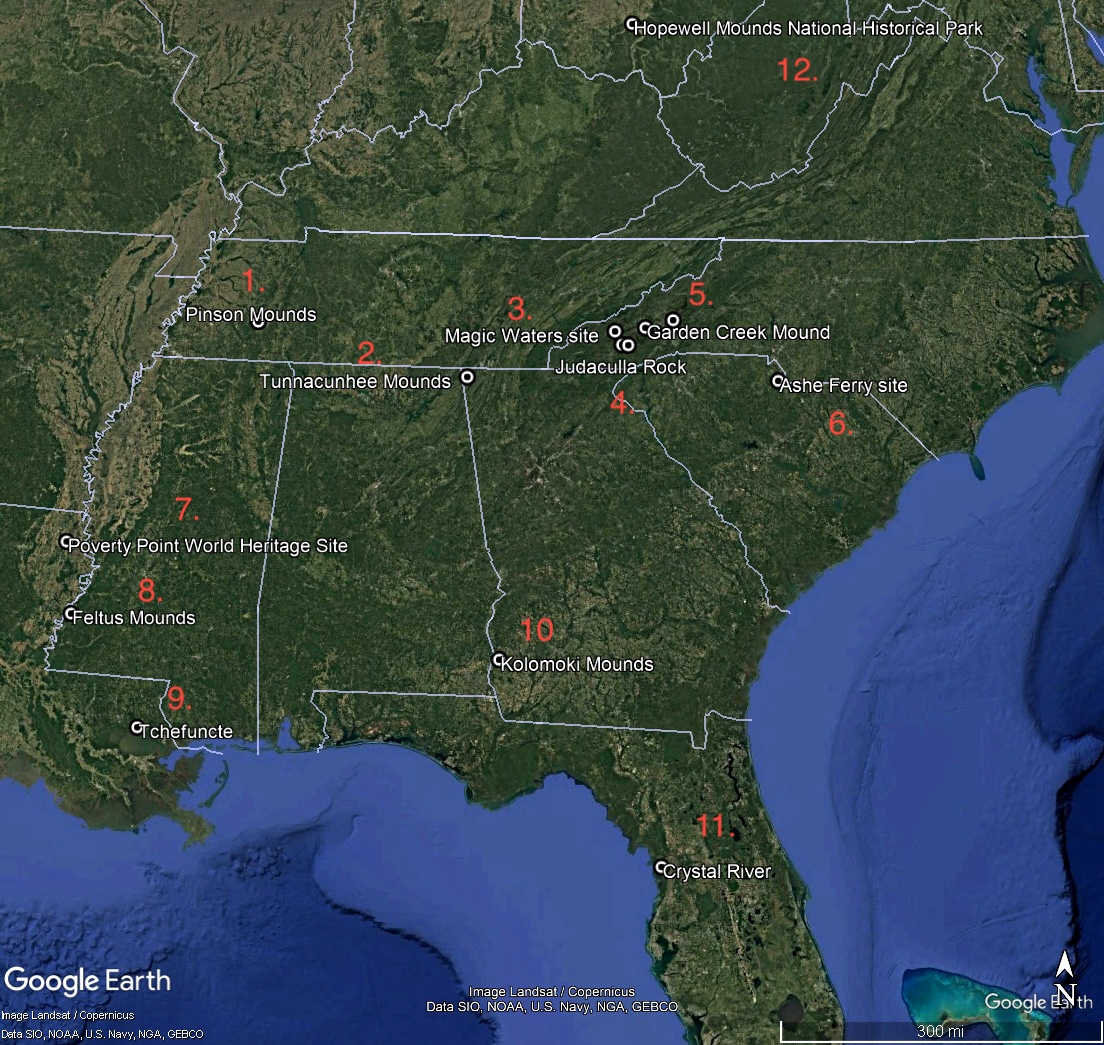
what is number 3.?
Magic waters site
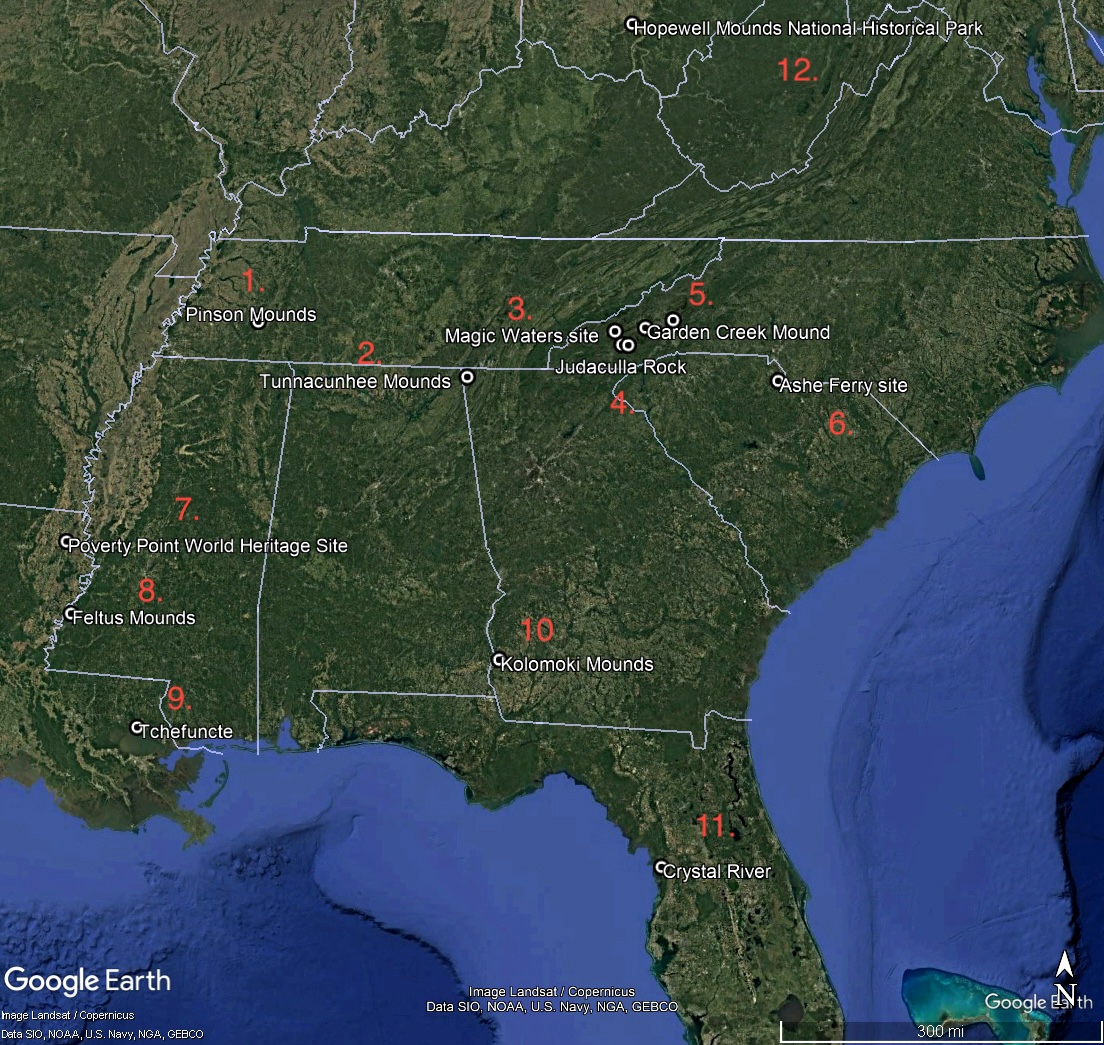
what is number 4.?
Judaculla Rock
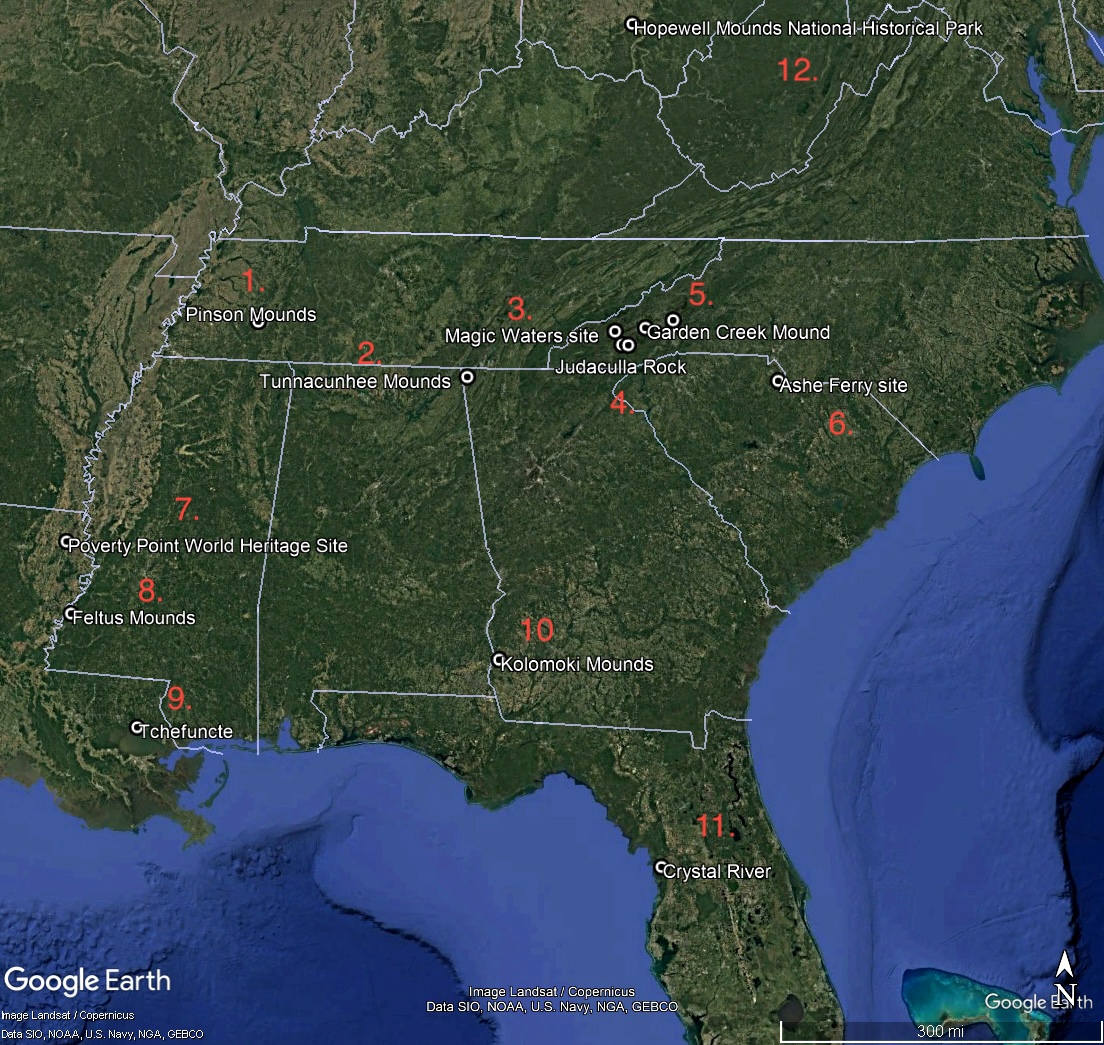
what is number 5.?
Garden creek mound
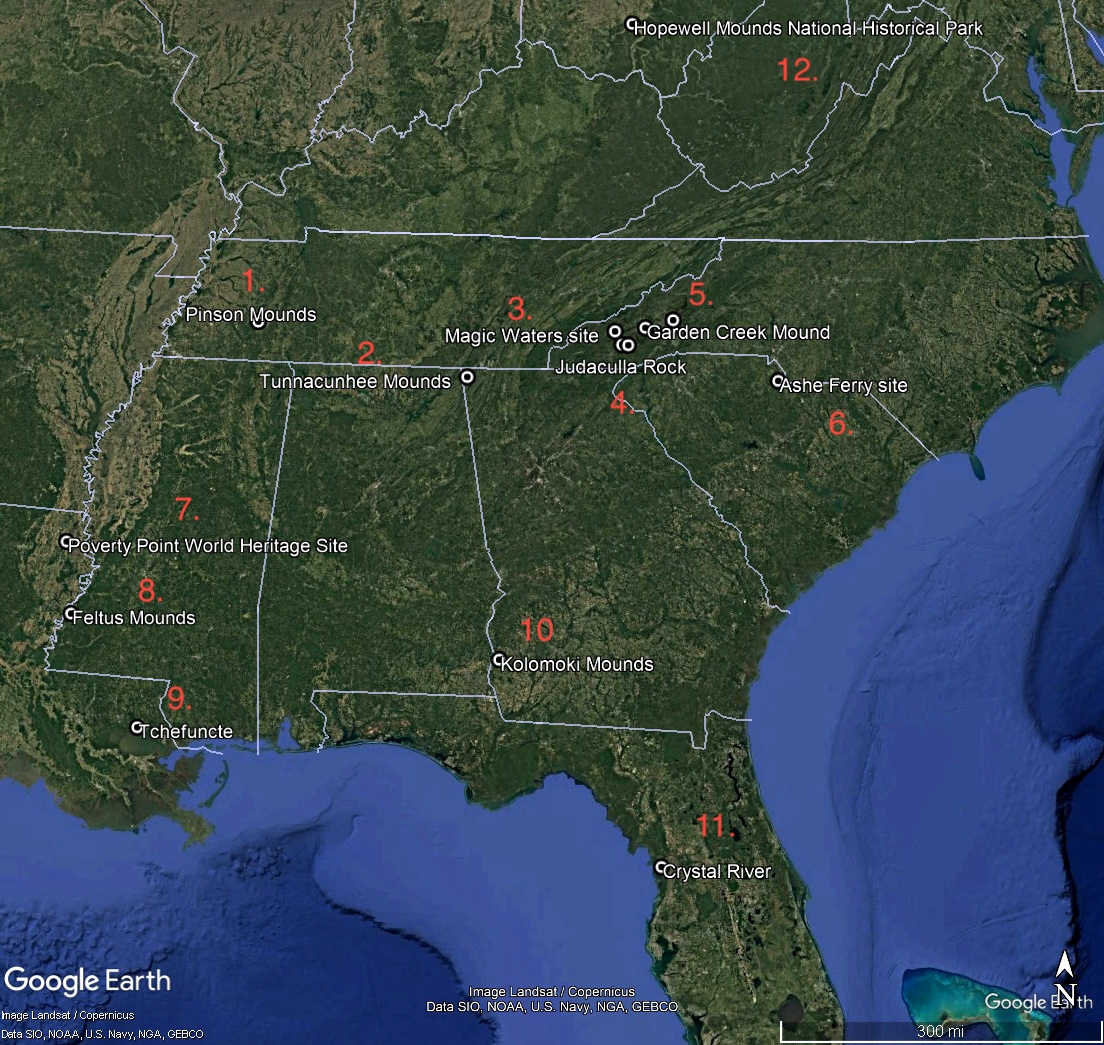
what is number 6.?
Ashe ferry site
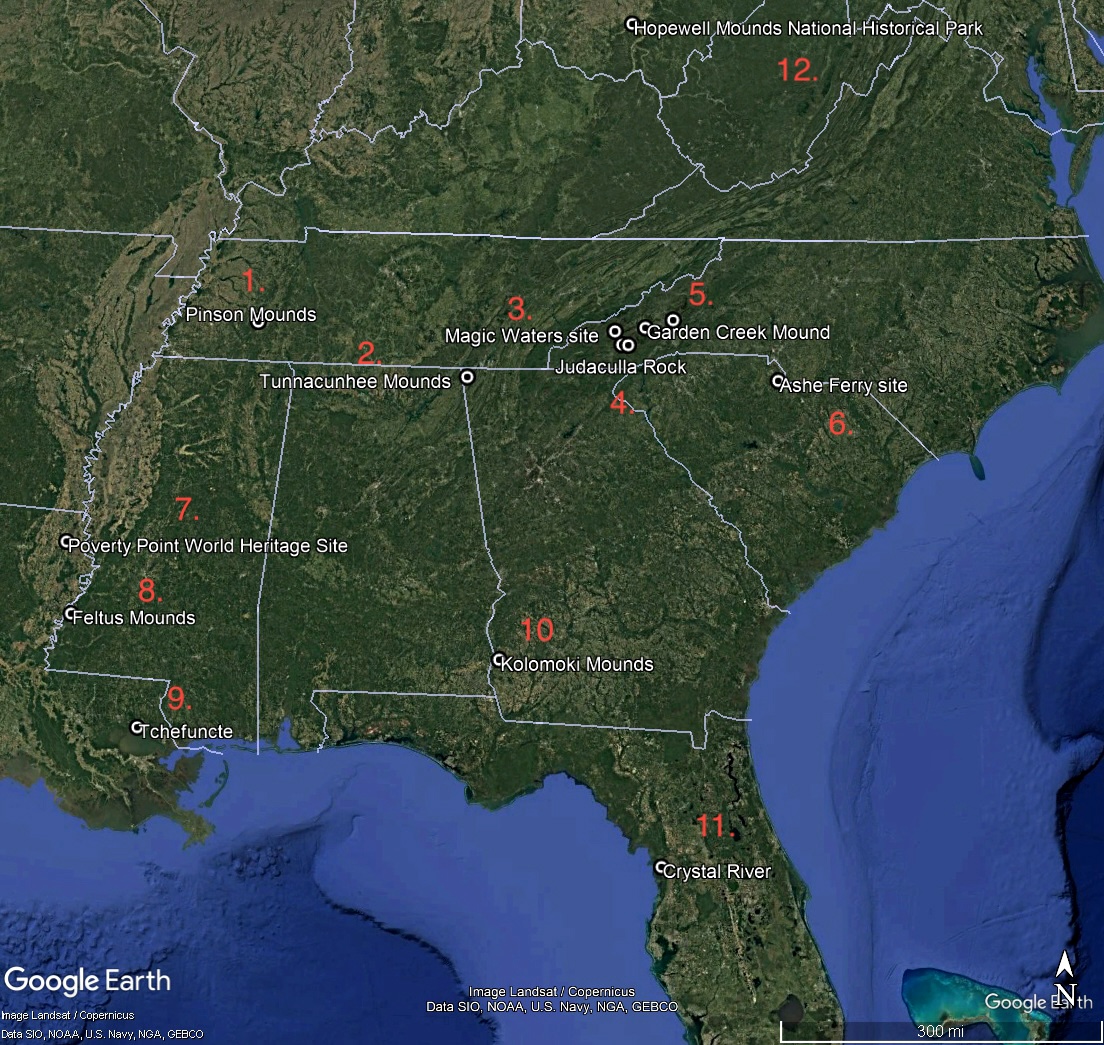
what is number 7.?
poverty point world heritage site
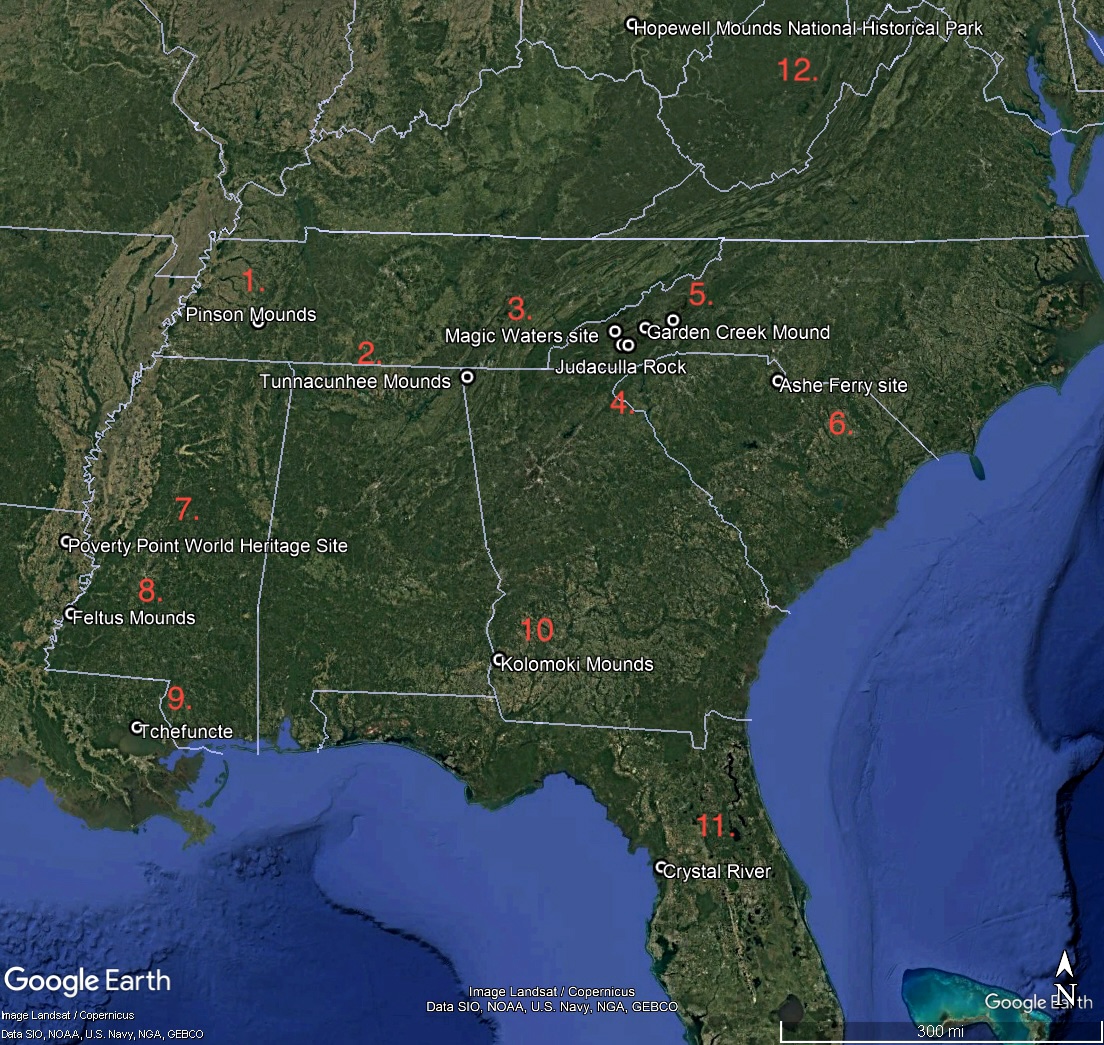
what is number 8.?
Feltus Mounds
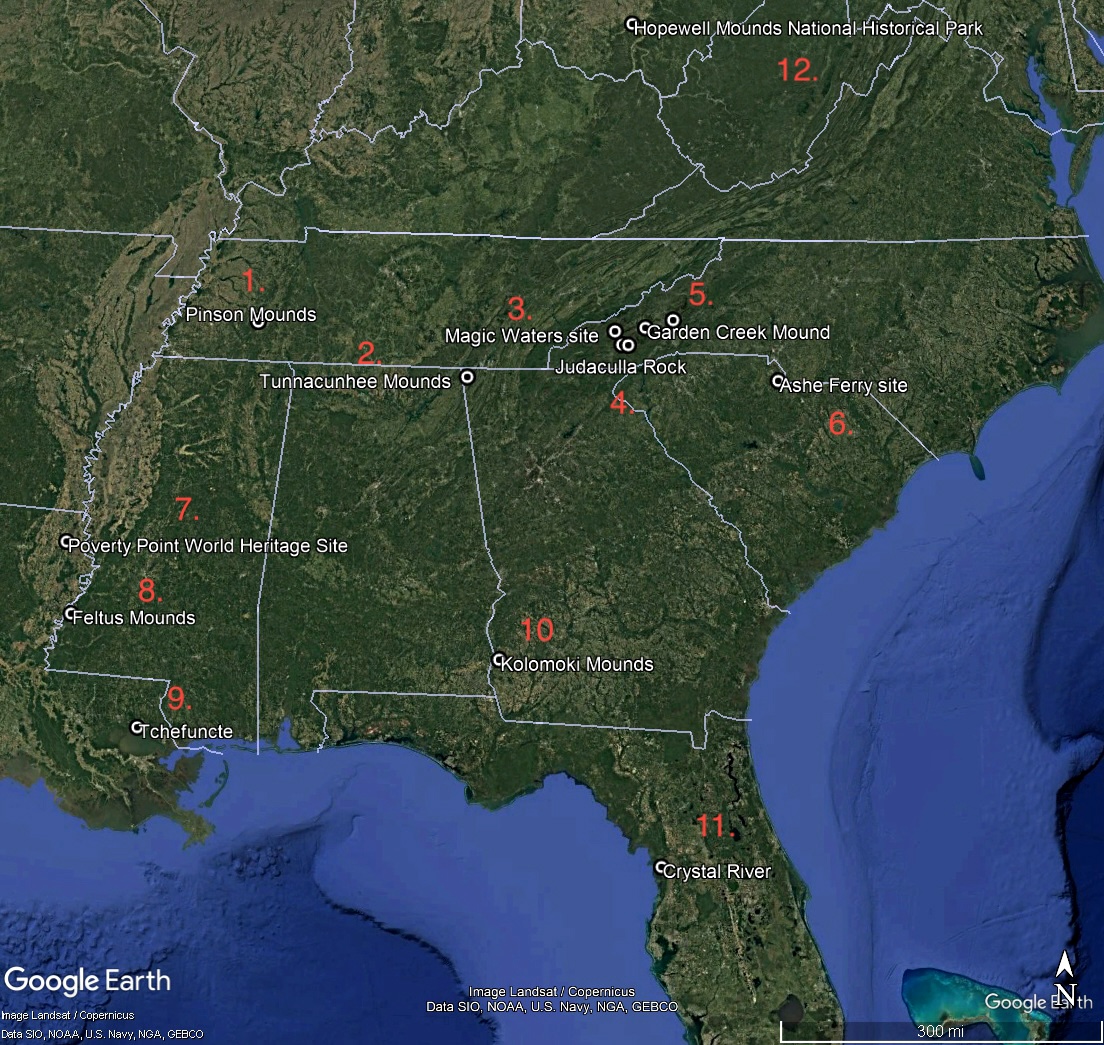
what is number 9.?
Tchefuncte
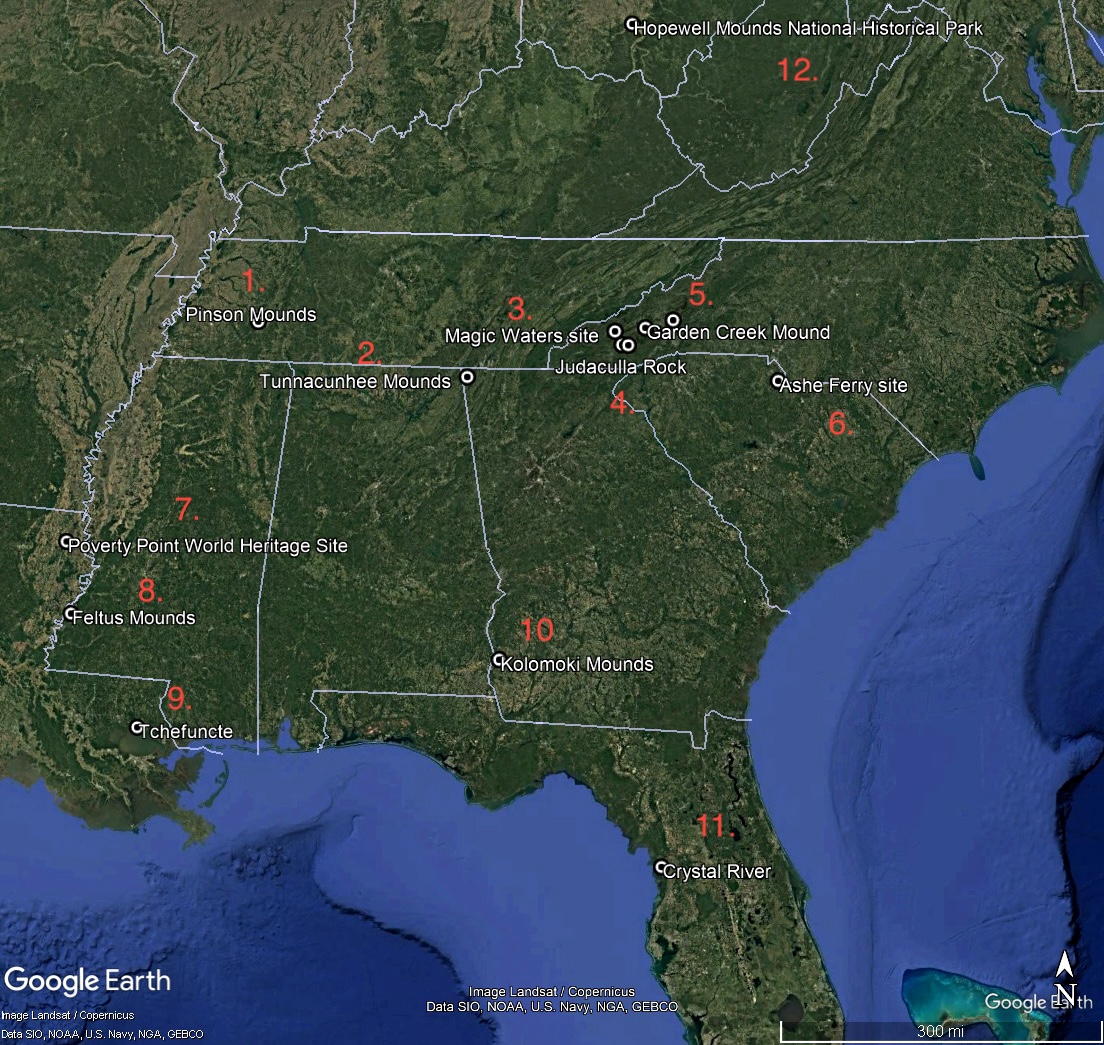
what is number 10.?
Kolomoki Mounds
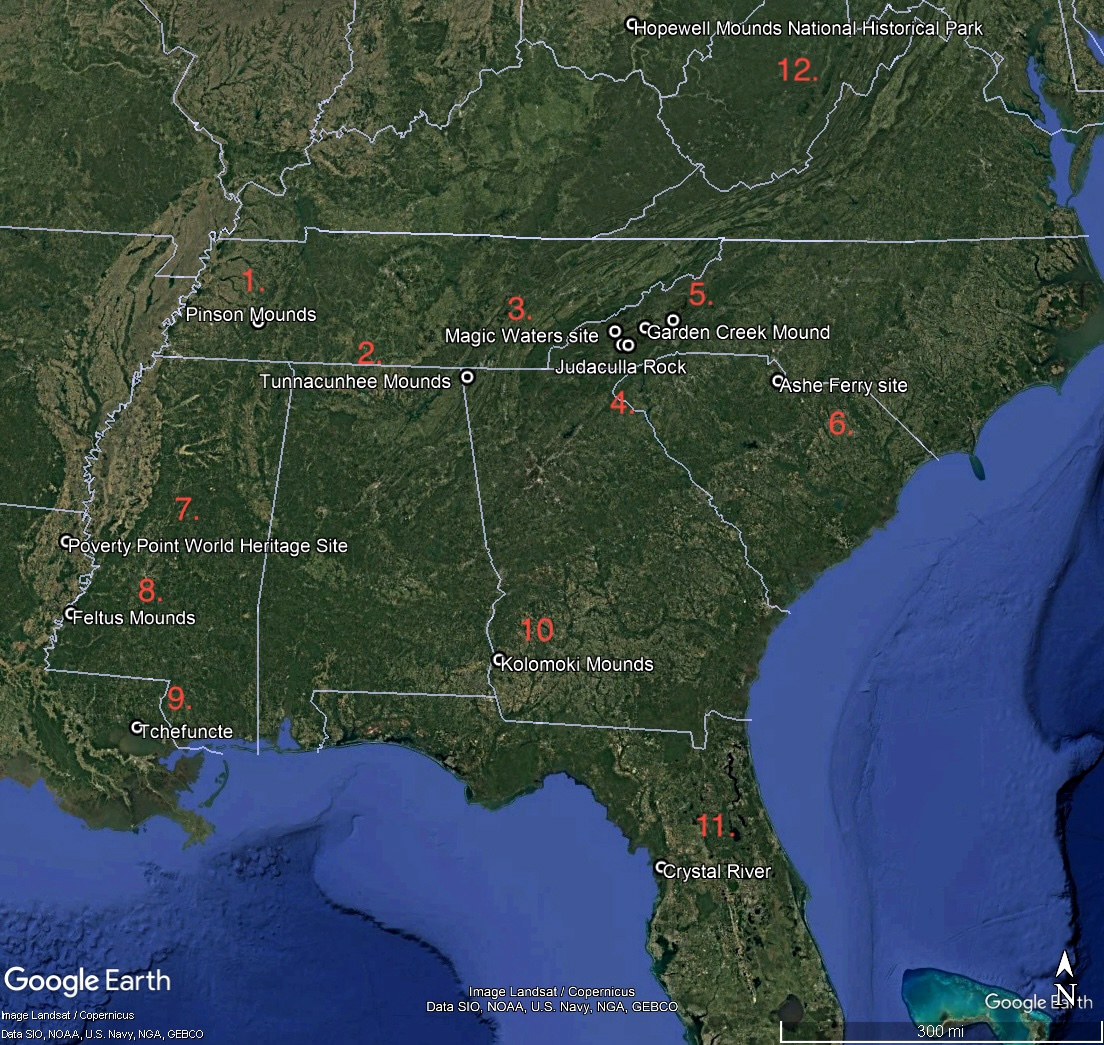
what is number 11.?
Crystal river
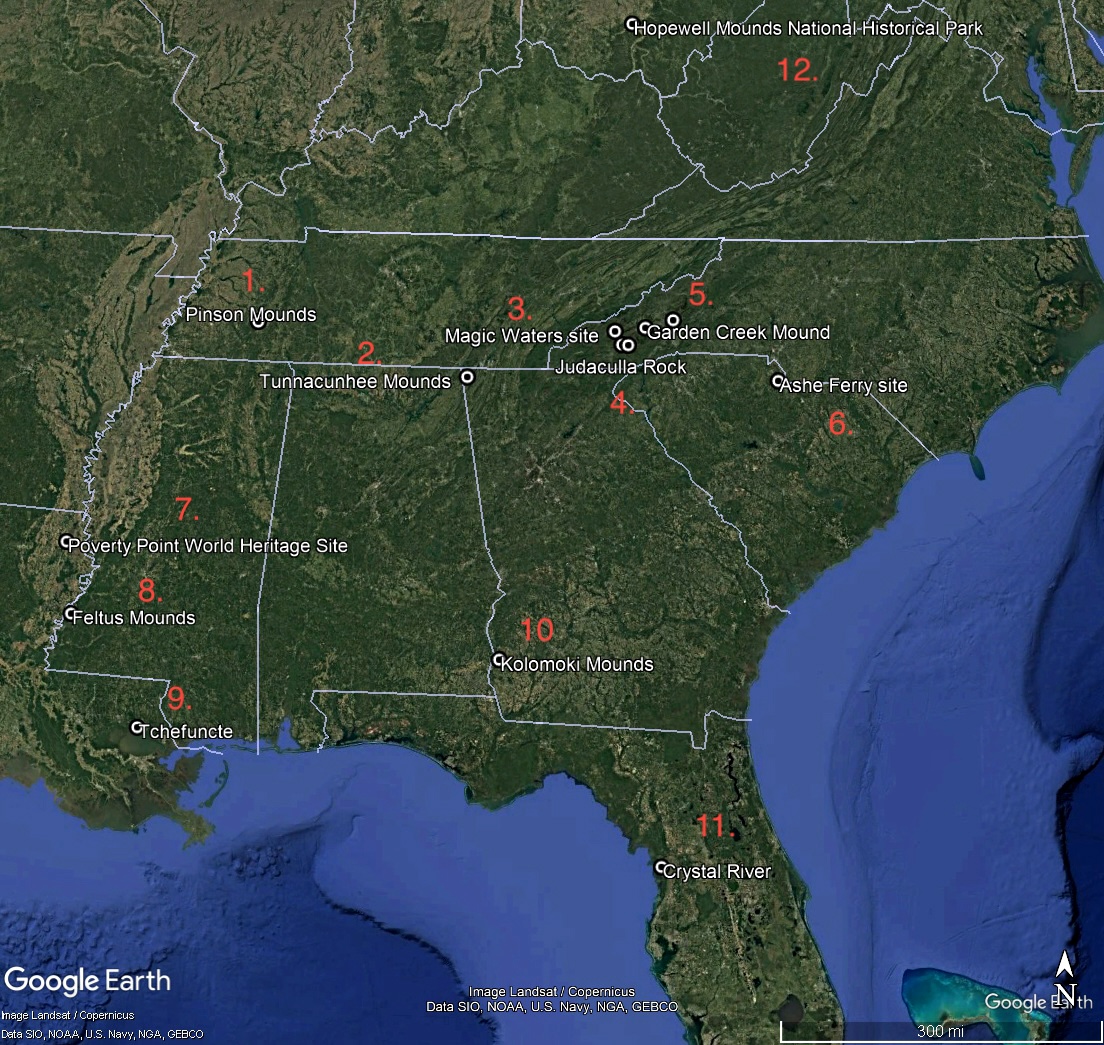
What is number 12.?
hopewell mounds national historical park
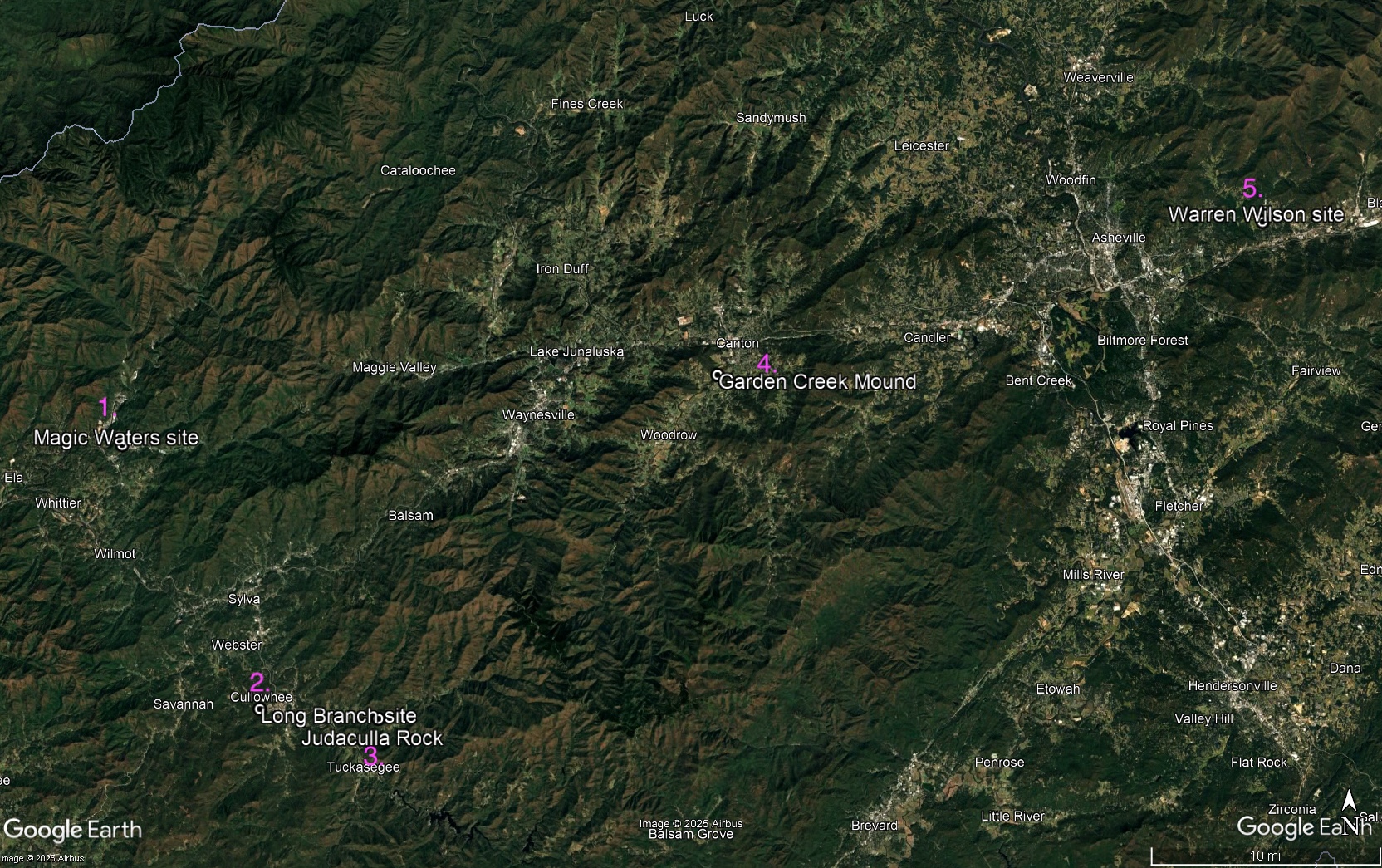
What is Number 1.?
Magic waters site
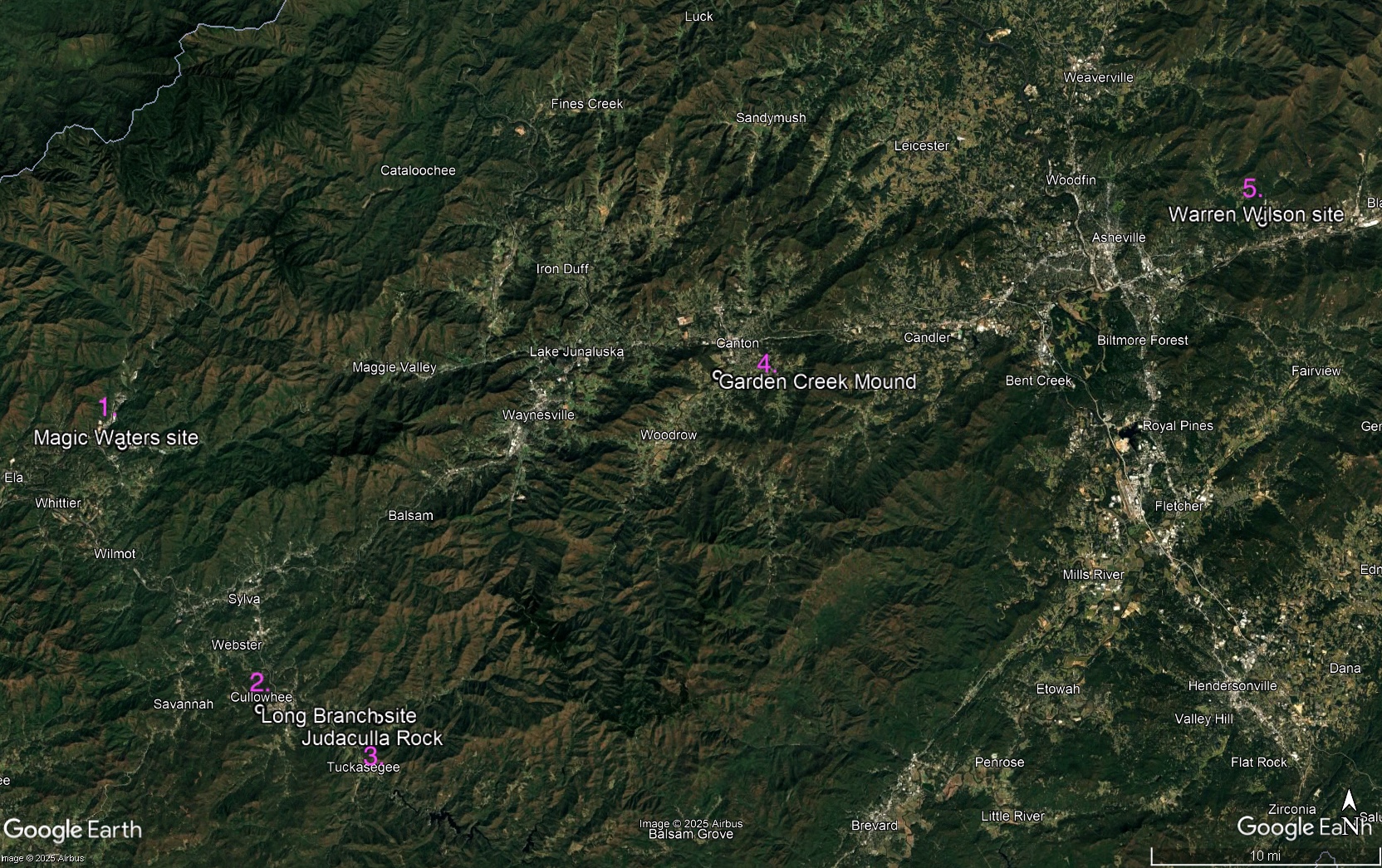
what is number 2.?
long branch site
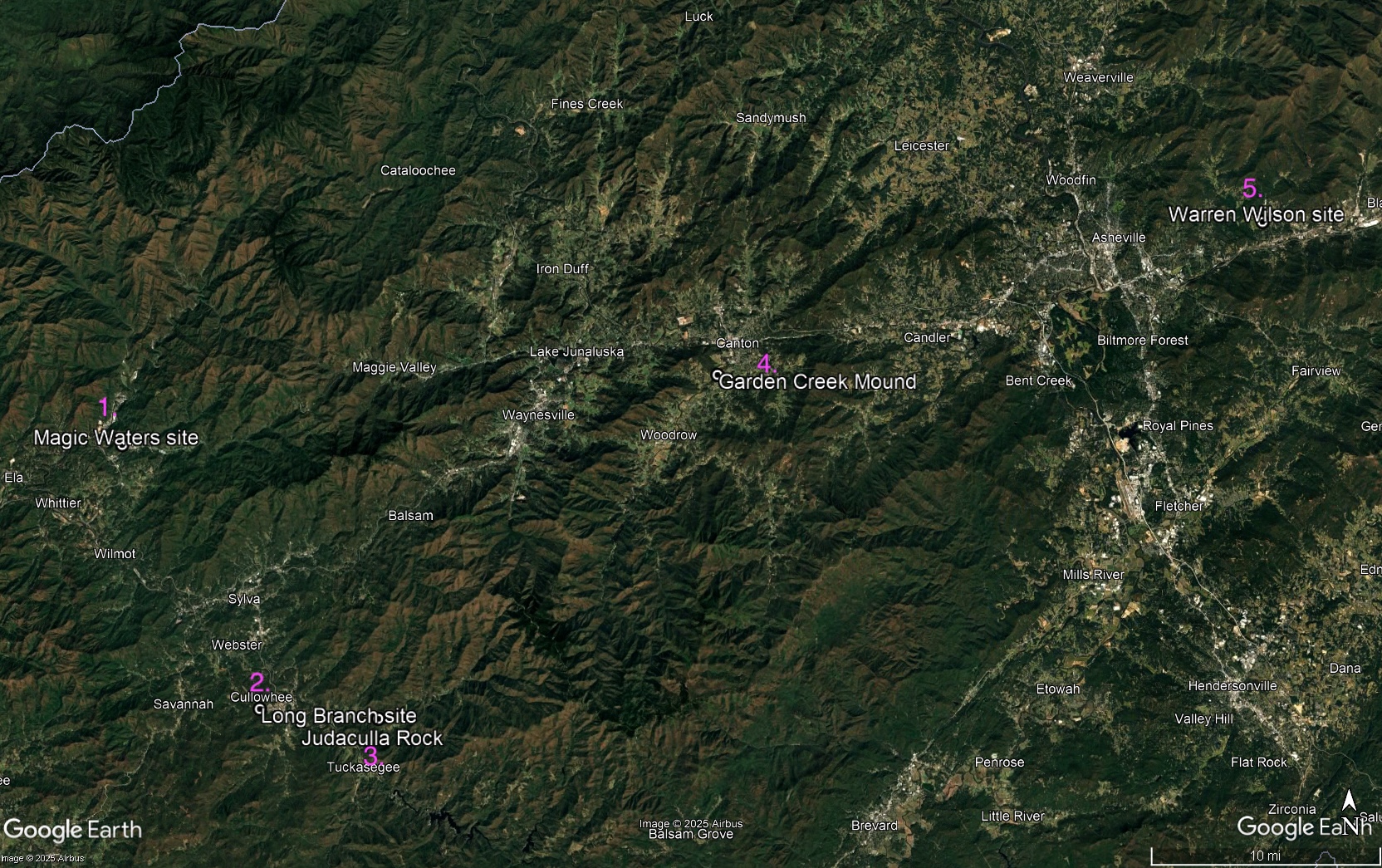
what is number 3.?
Judaculla rock
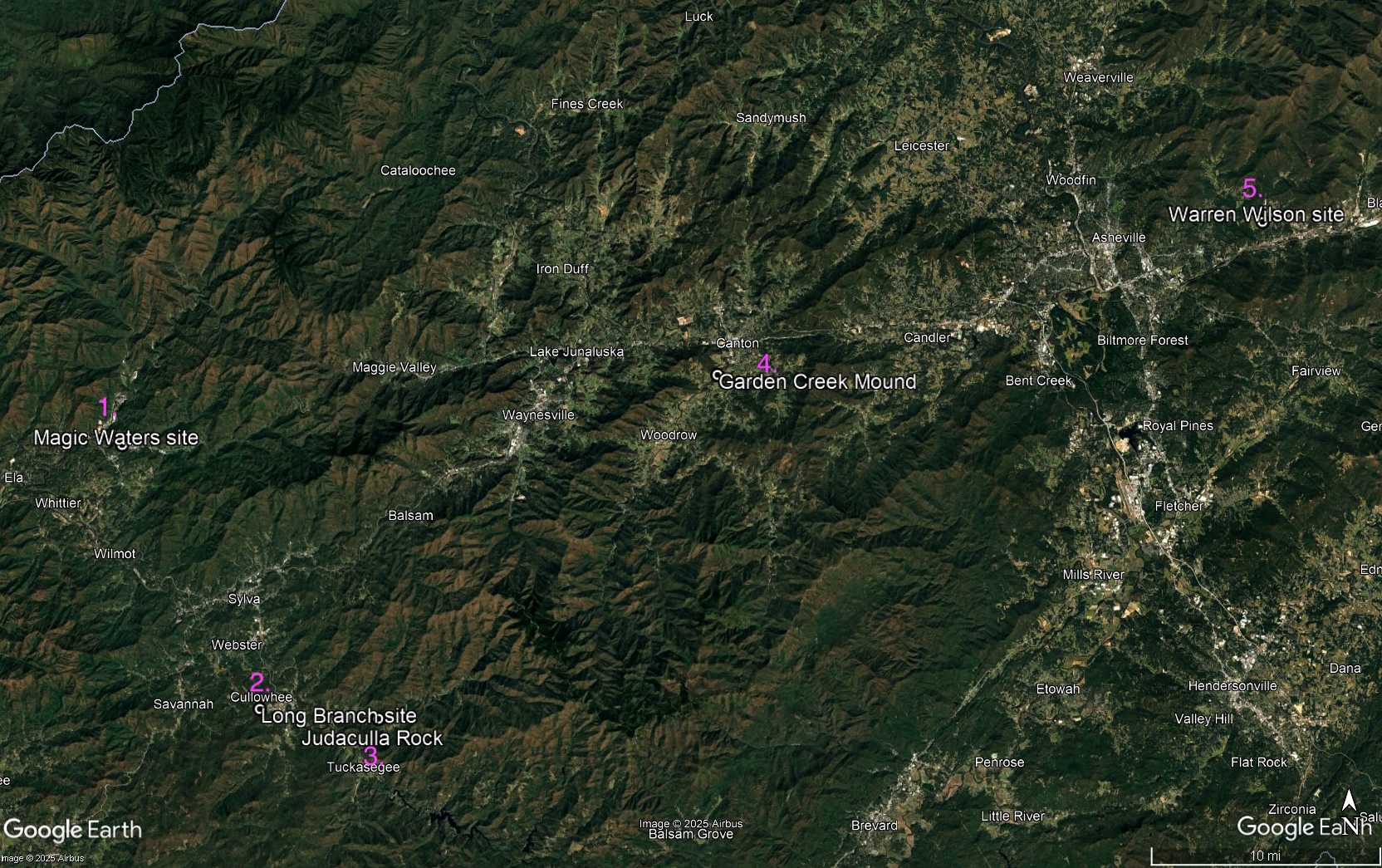
what is number 4.?
garden creek mound
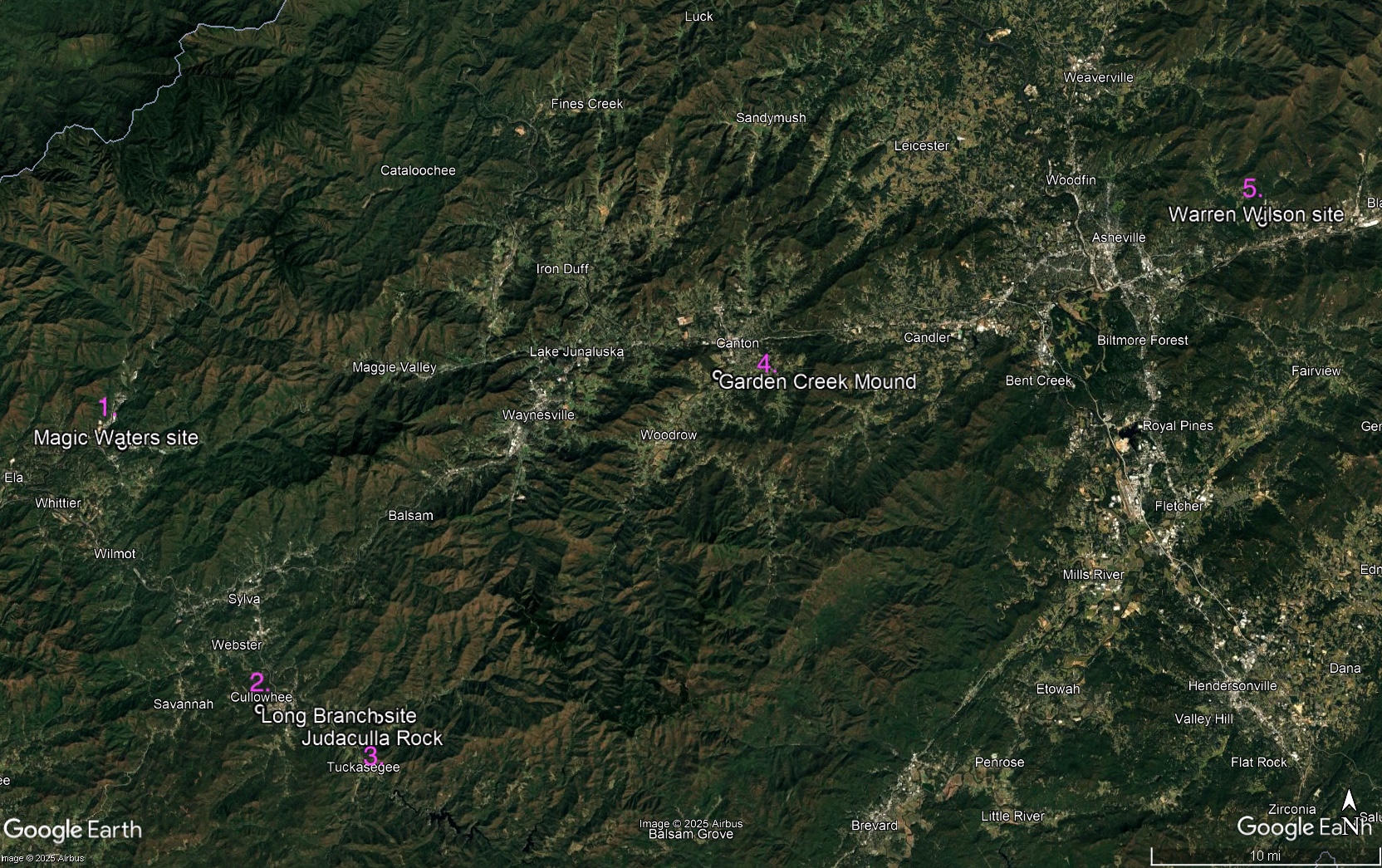
what is number 5.?
warren wilson site
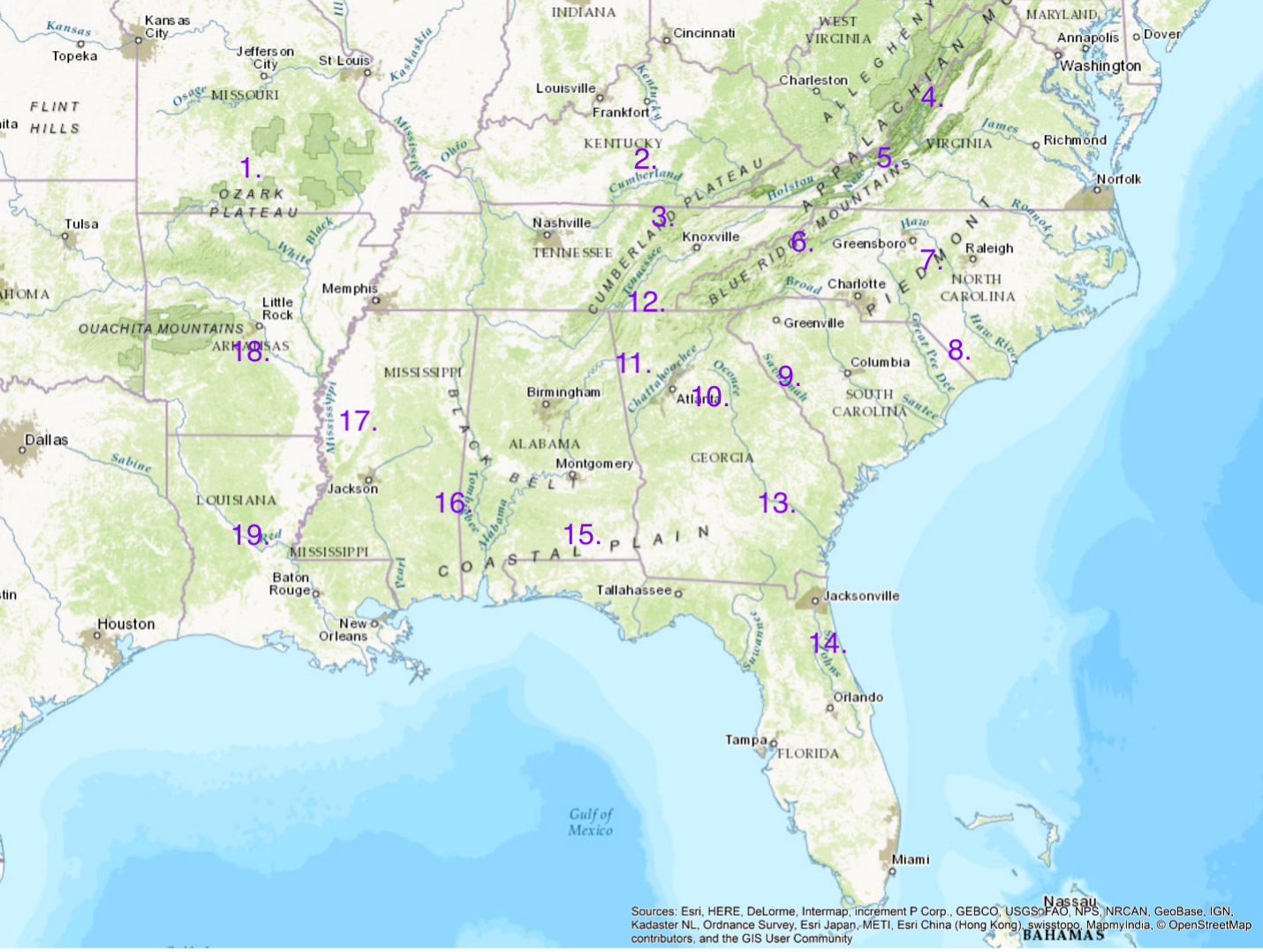
what is number 1.?
Ozark Plateau
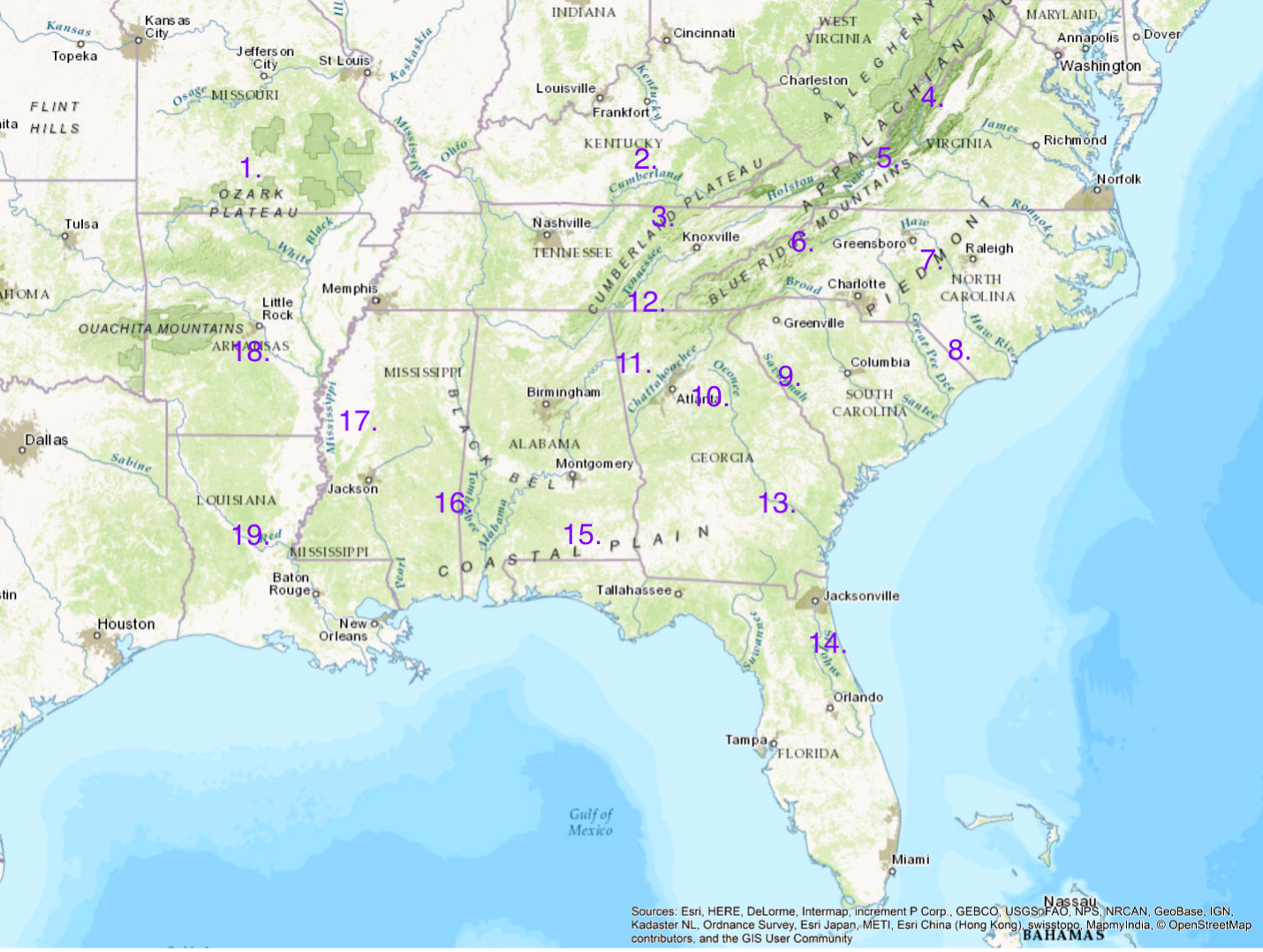
what is number 2.?
cumberland river
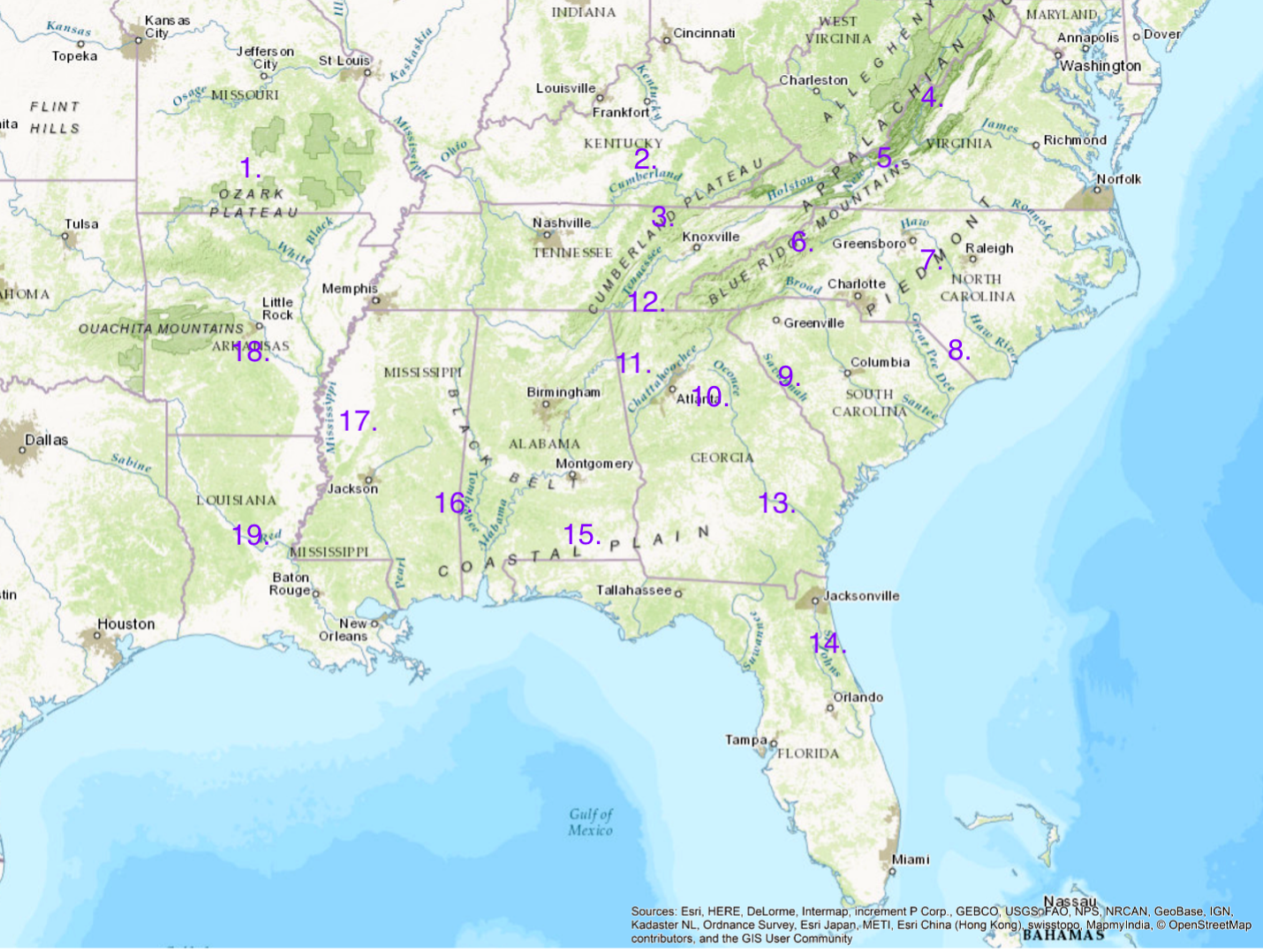
what is number 3.?
cumberland plateau
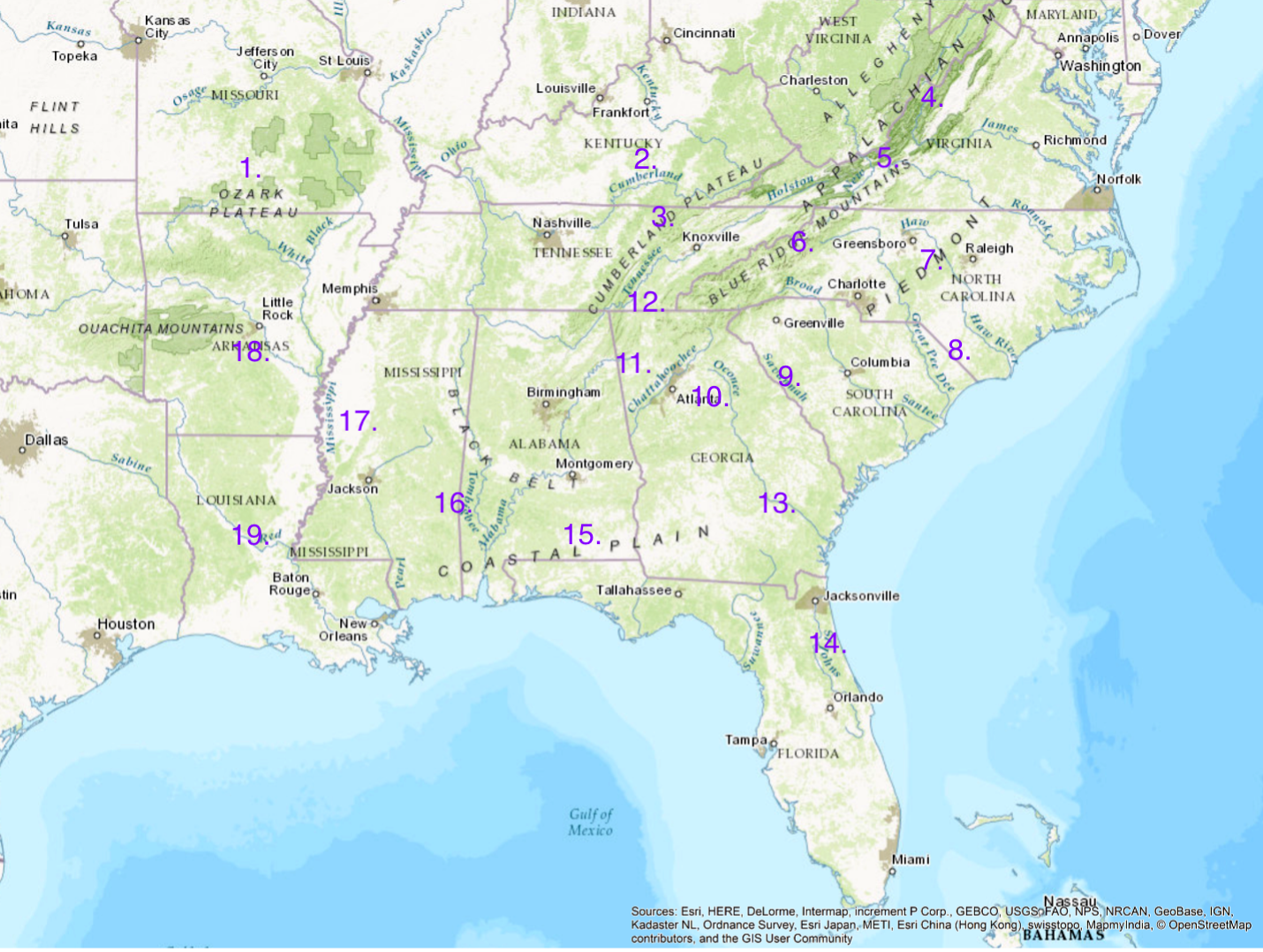
what is number 4.?
Appalachian plateau
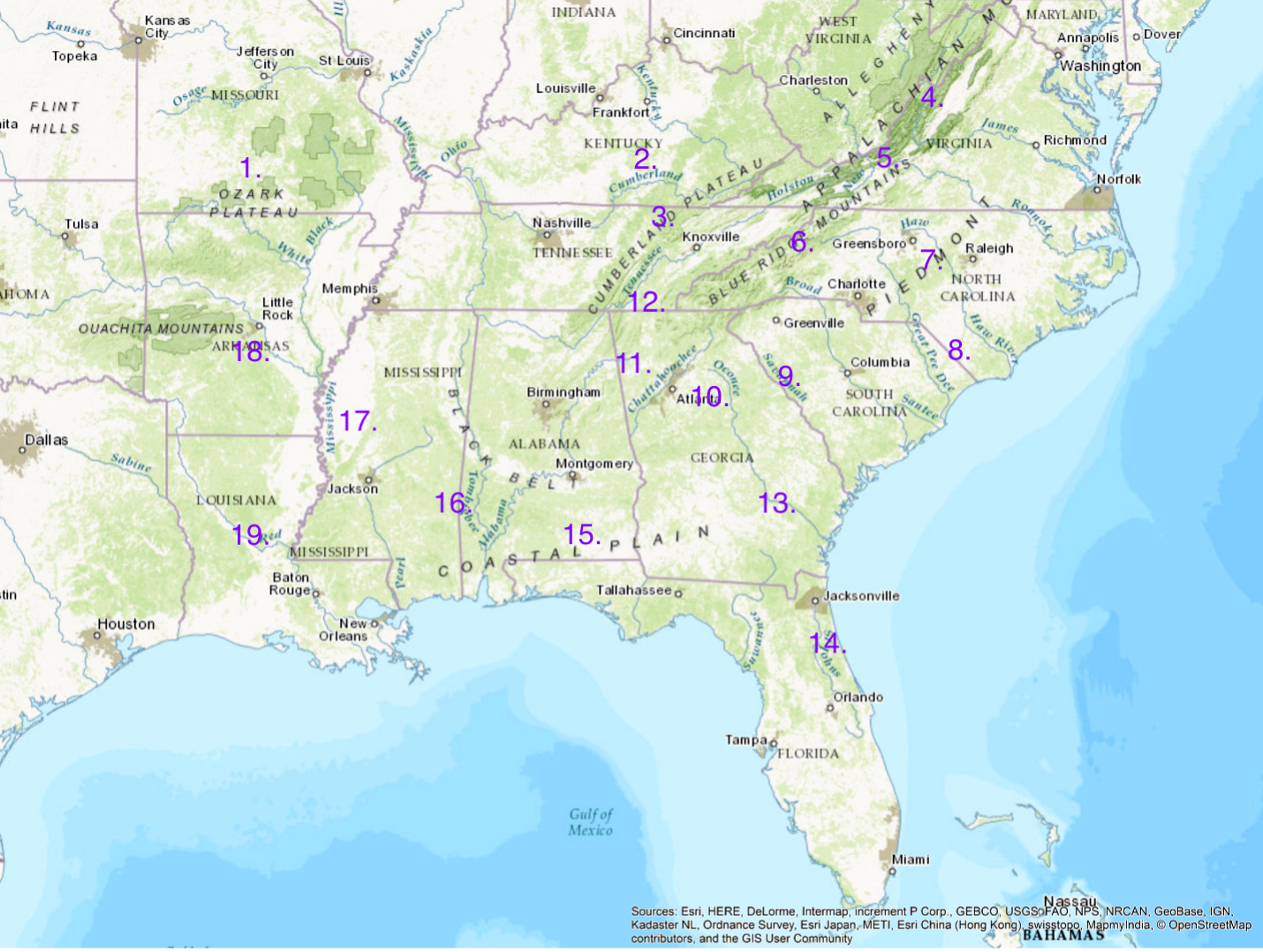
what is number 5.?
ridge and valley
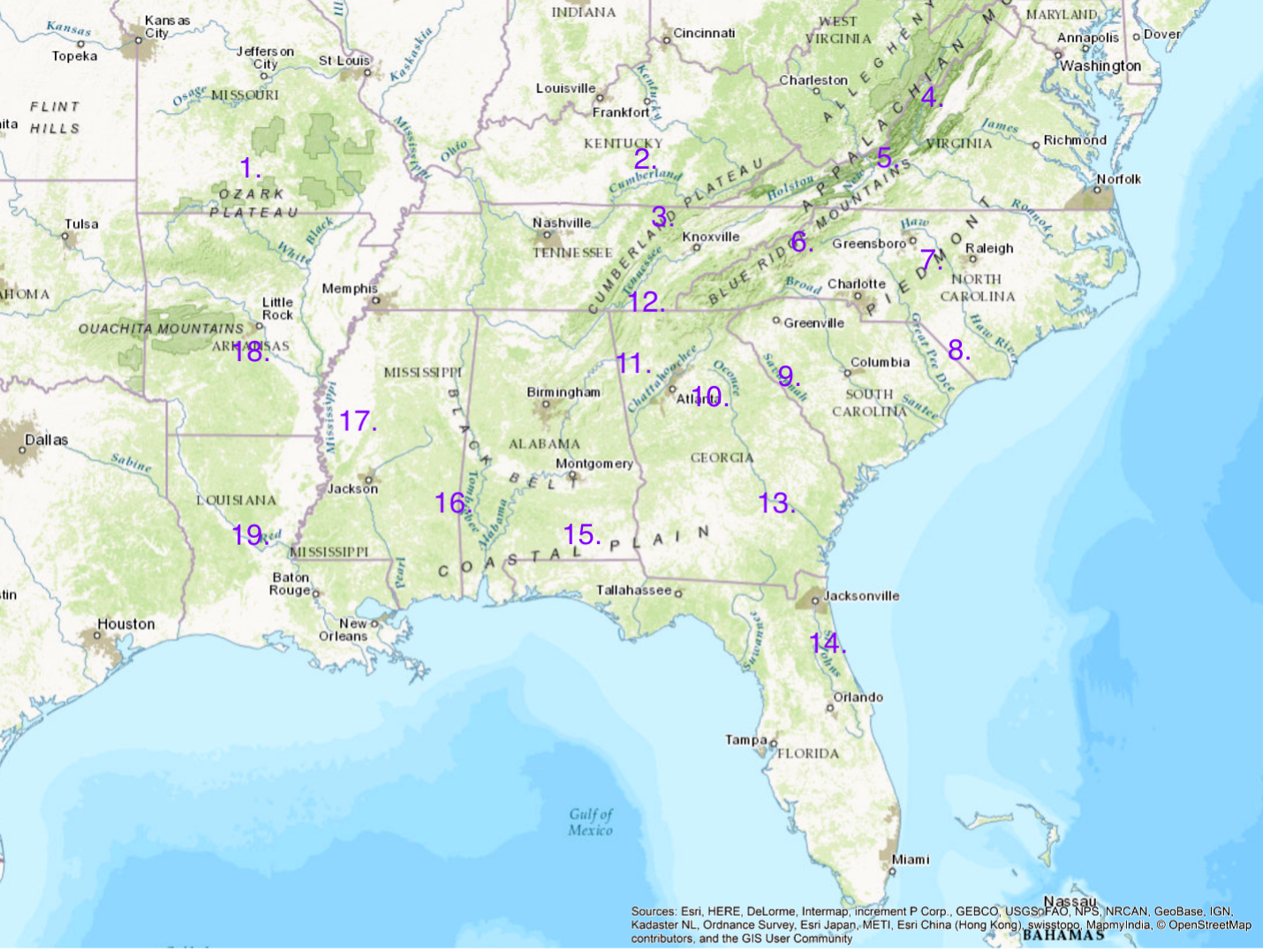
what is number 6.?
blue ridge
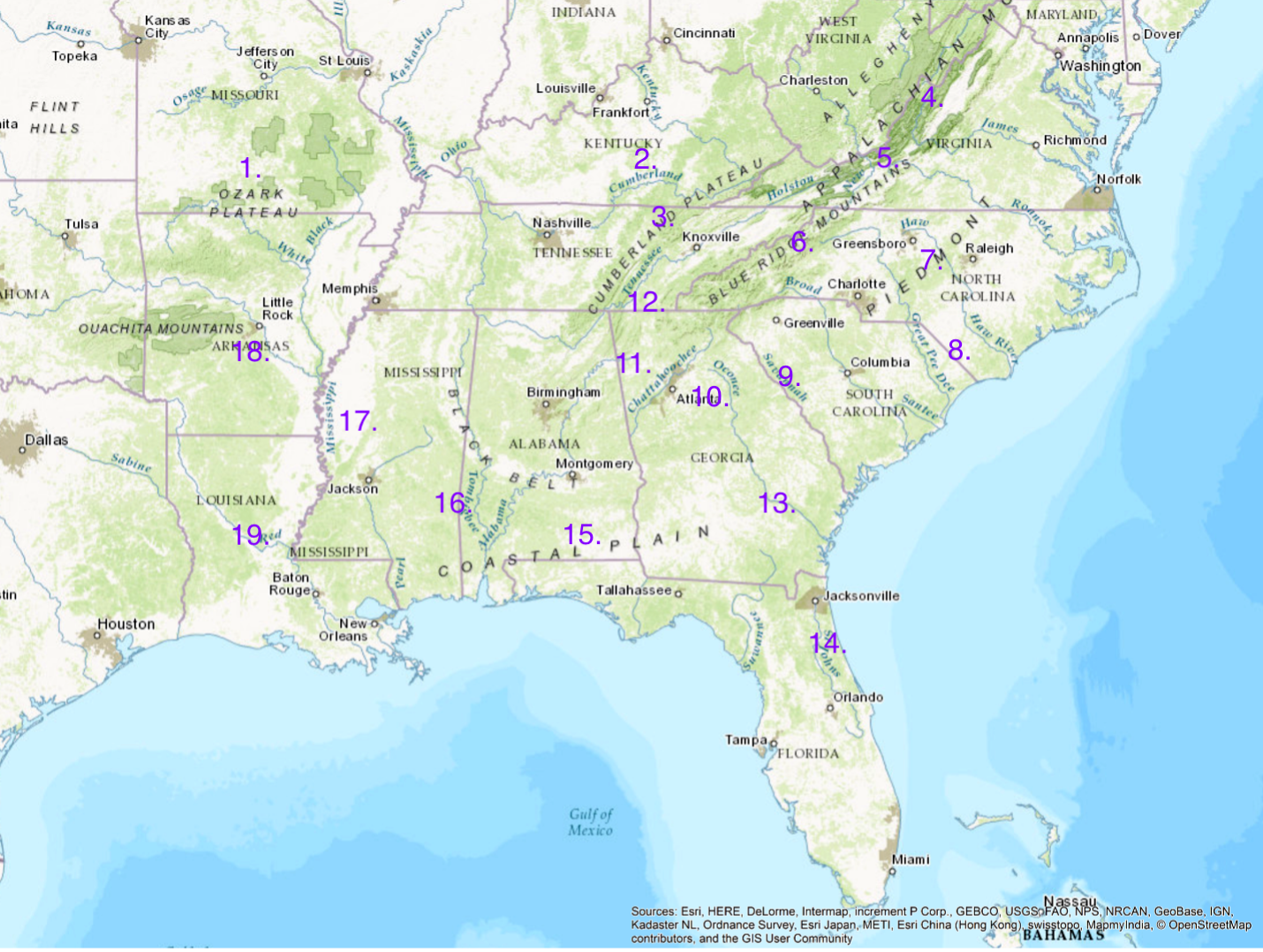
what is number 7.?
peidmont
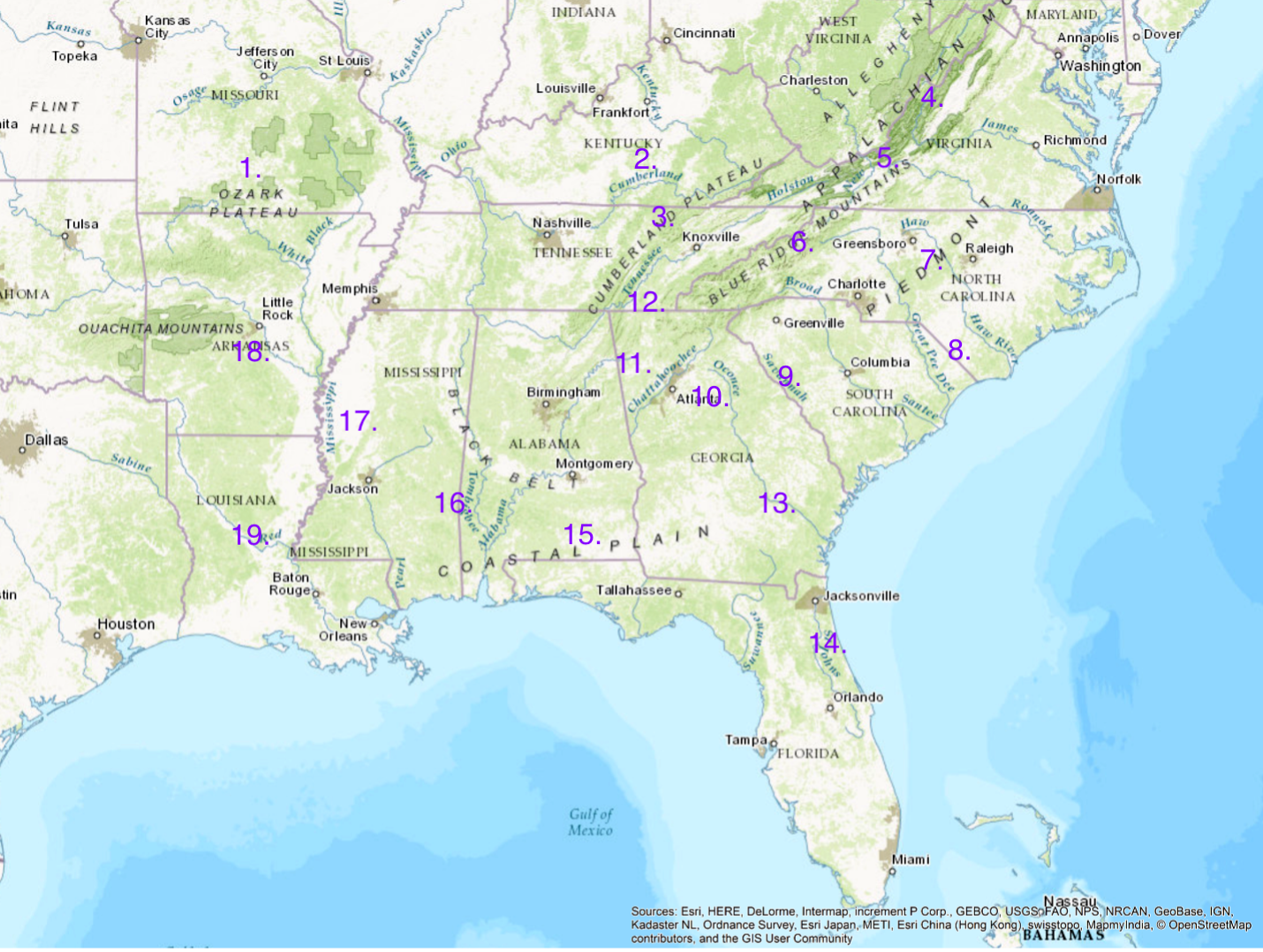
what is number 8.?
great pee dee river
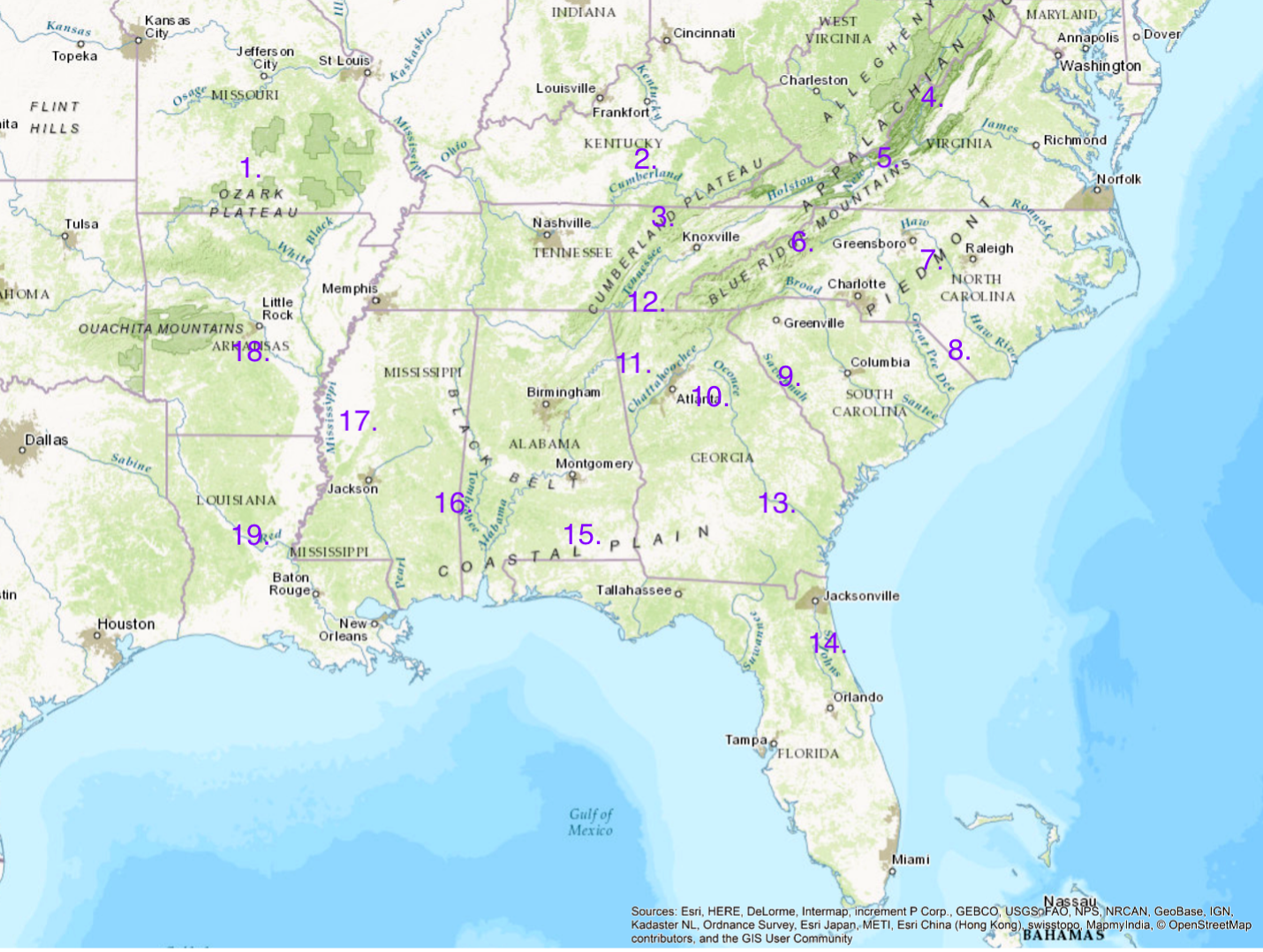
what is number 9.?
savannah river
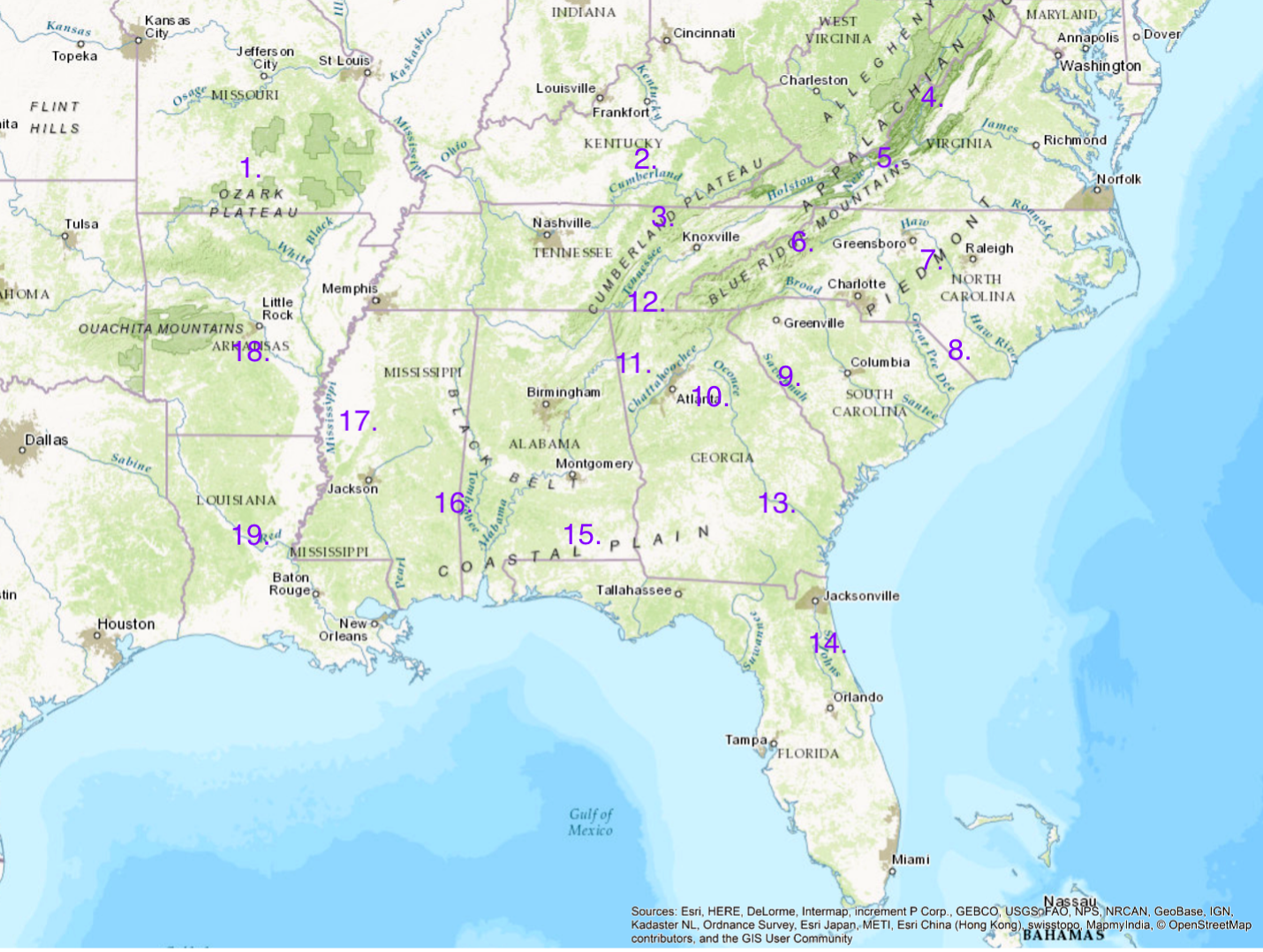
what is number 10.?
oconee river
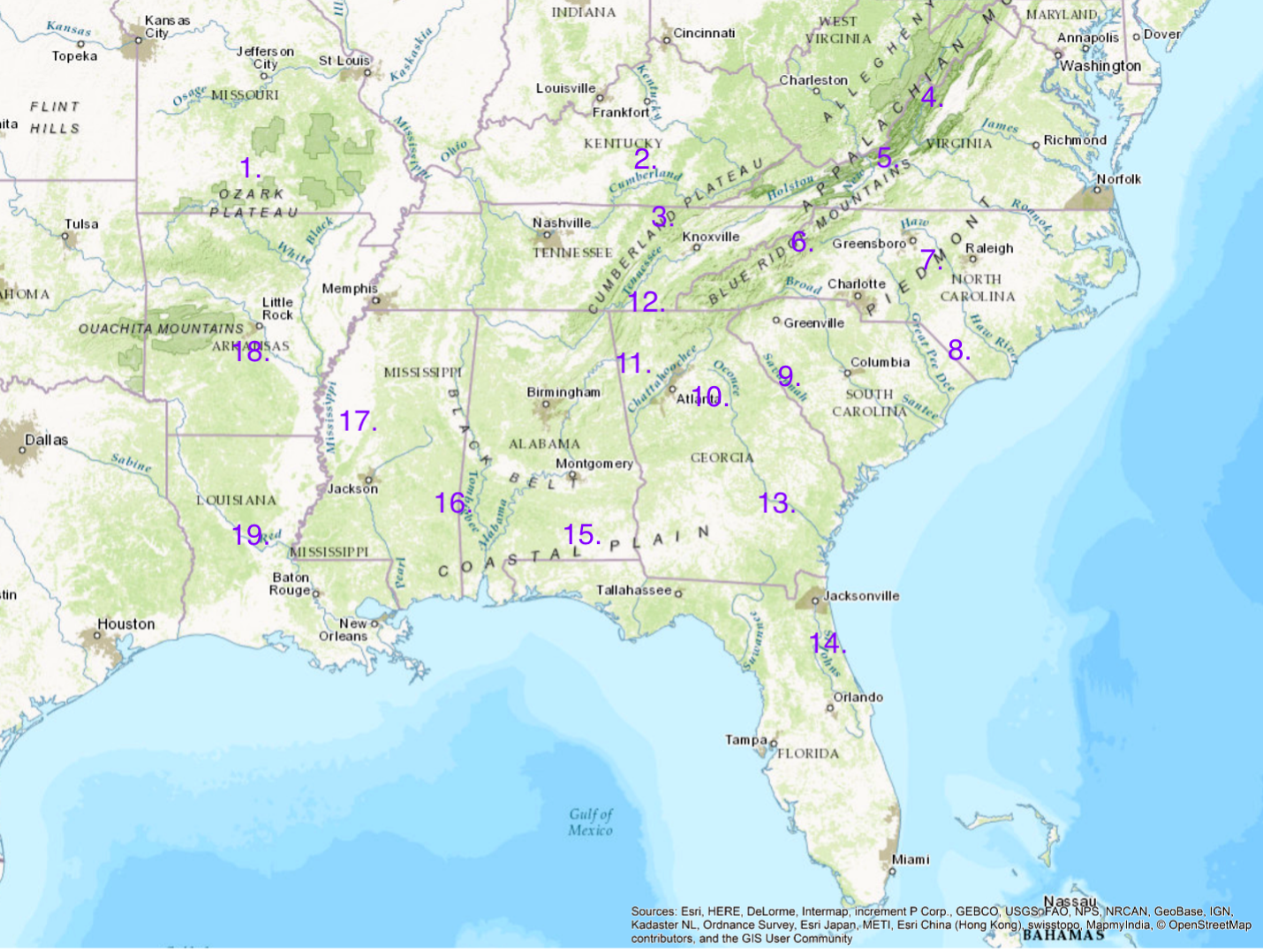
what is number 11.?
chattahoochie river
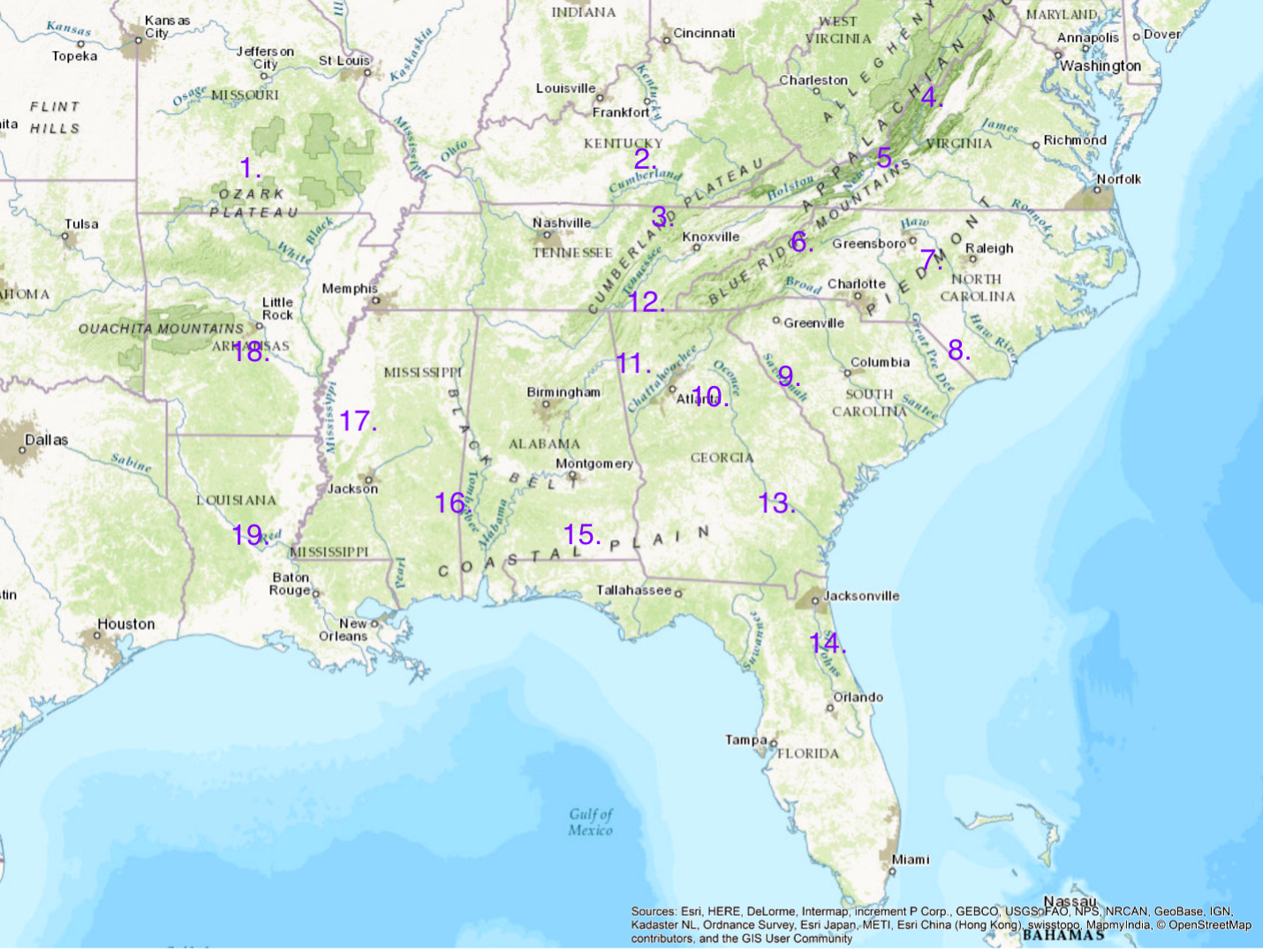
what is number 12.?
tennessee river
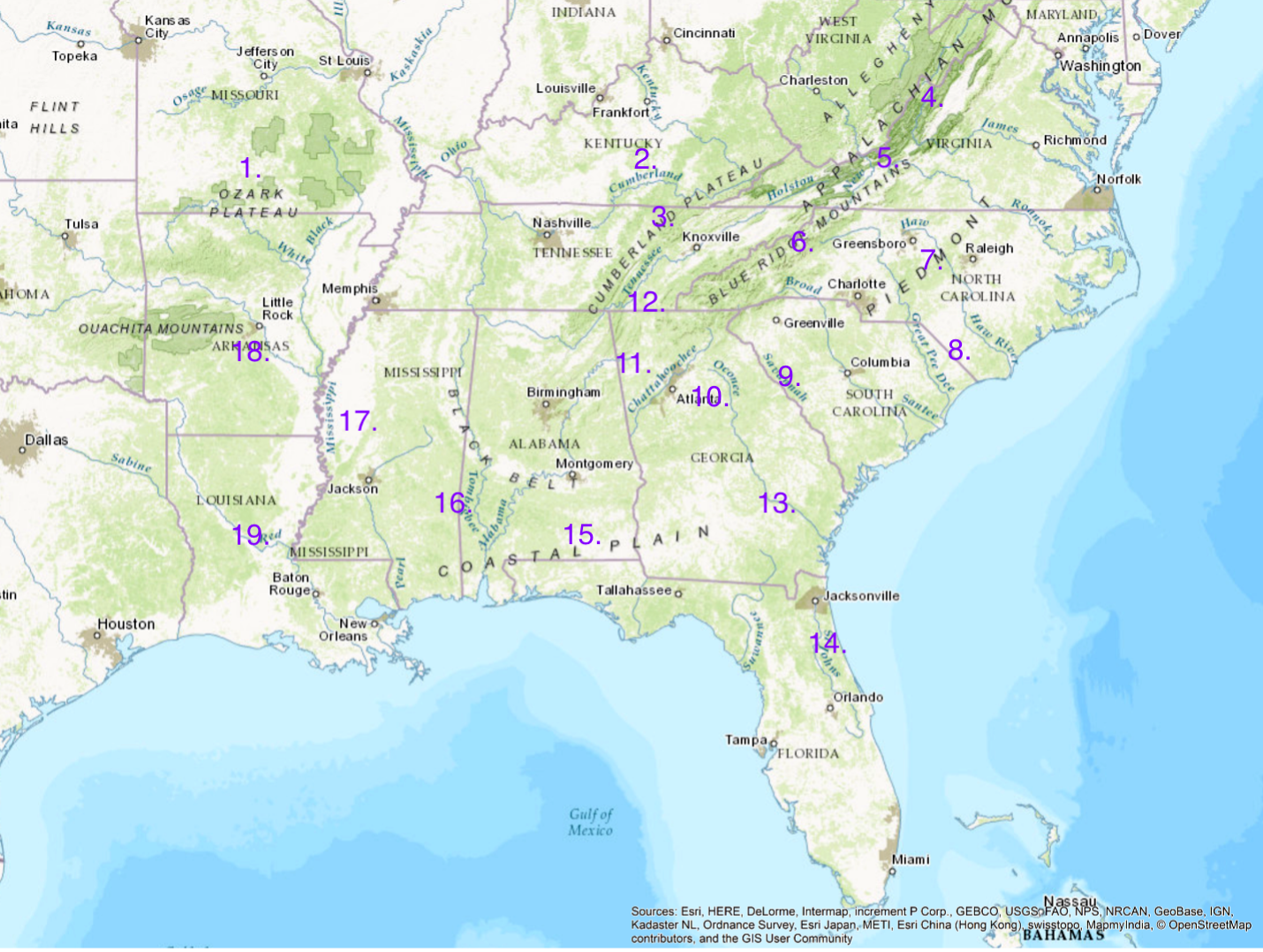
what is number 13.?
13 should be near 2 &3 representing the interior low plateau

what is number 14.?
cape fear river
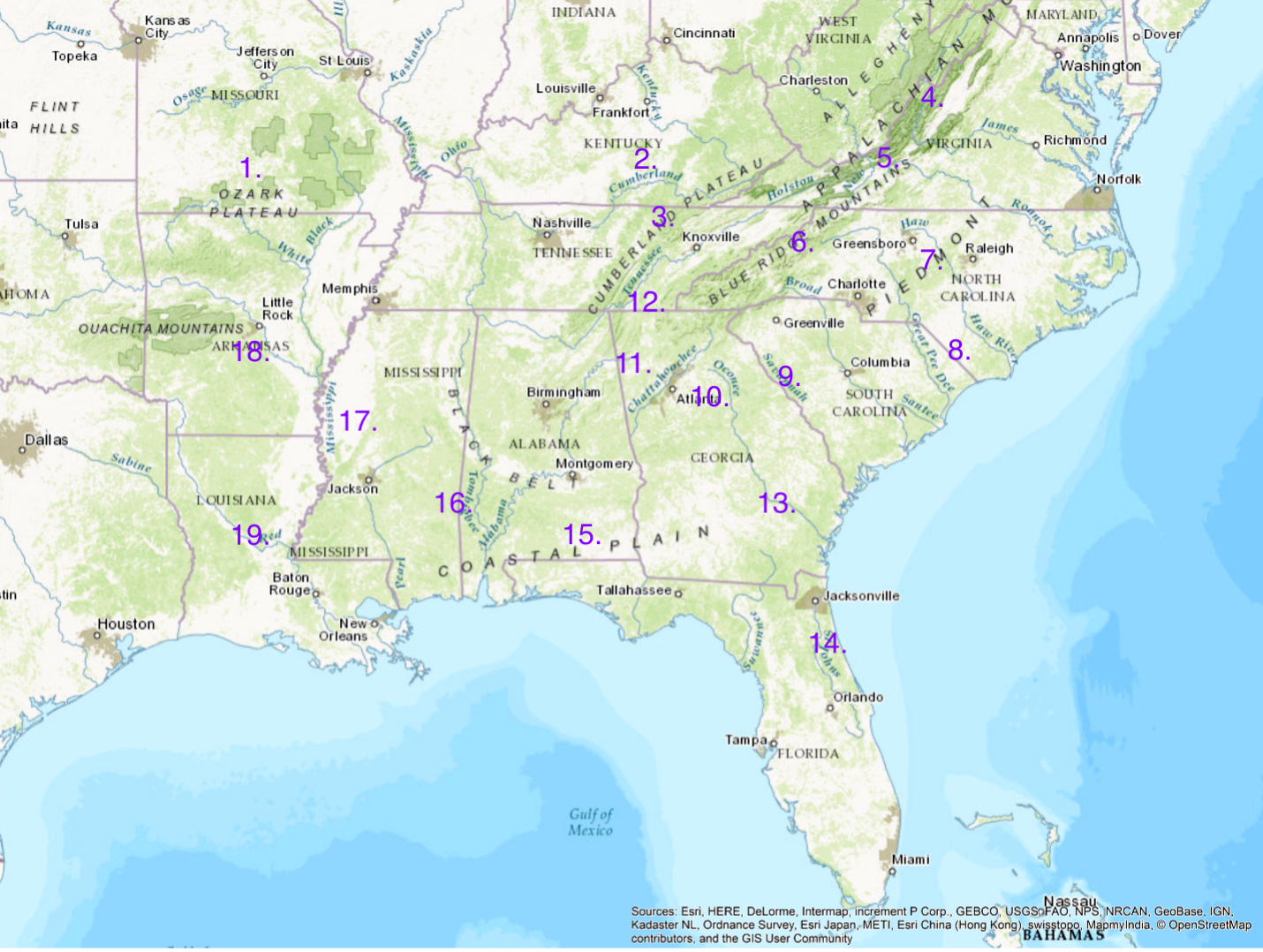
what is number 15.?
coastal plain

what is number 16.?
tombigbee river

what is number 17.?
Mississippi river
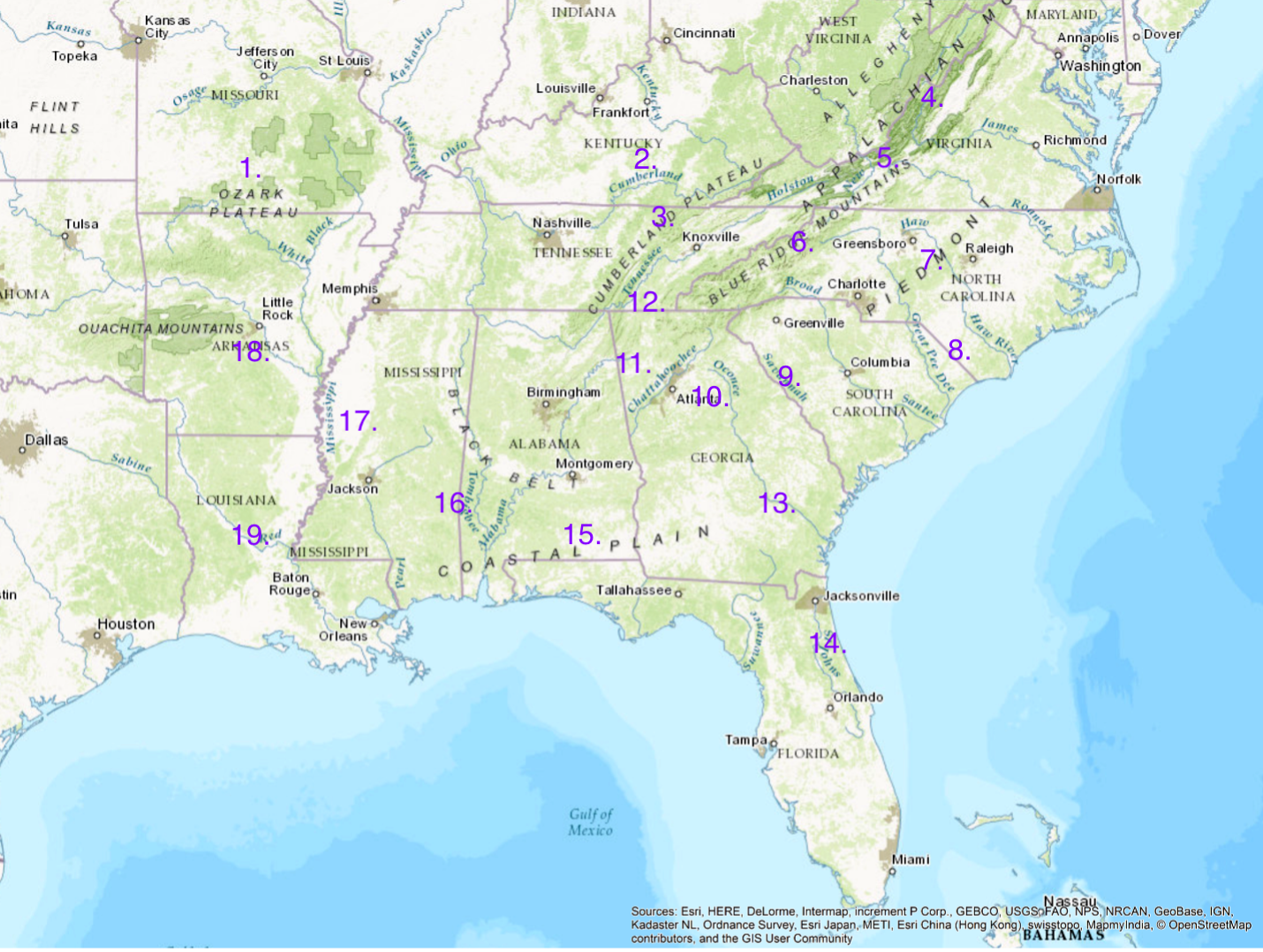
what is number 18.?
arkansas river
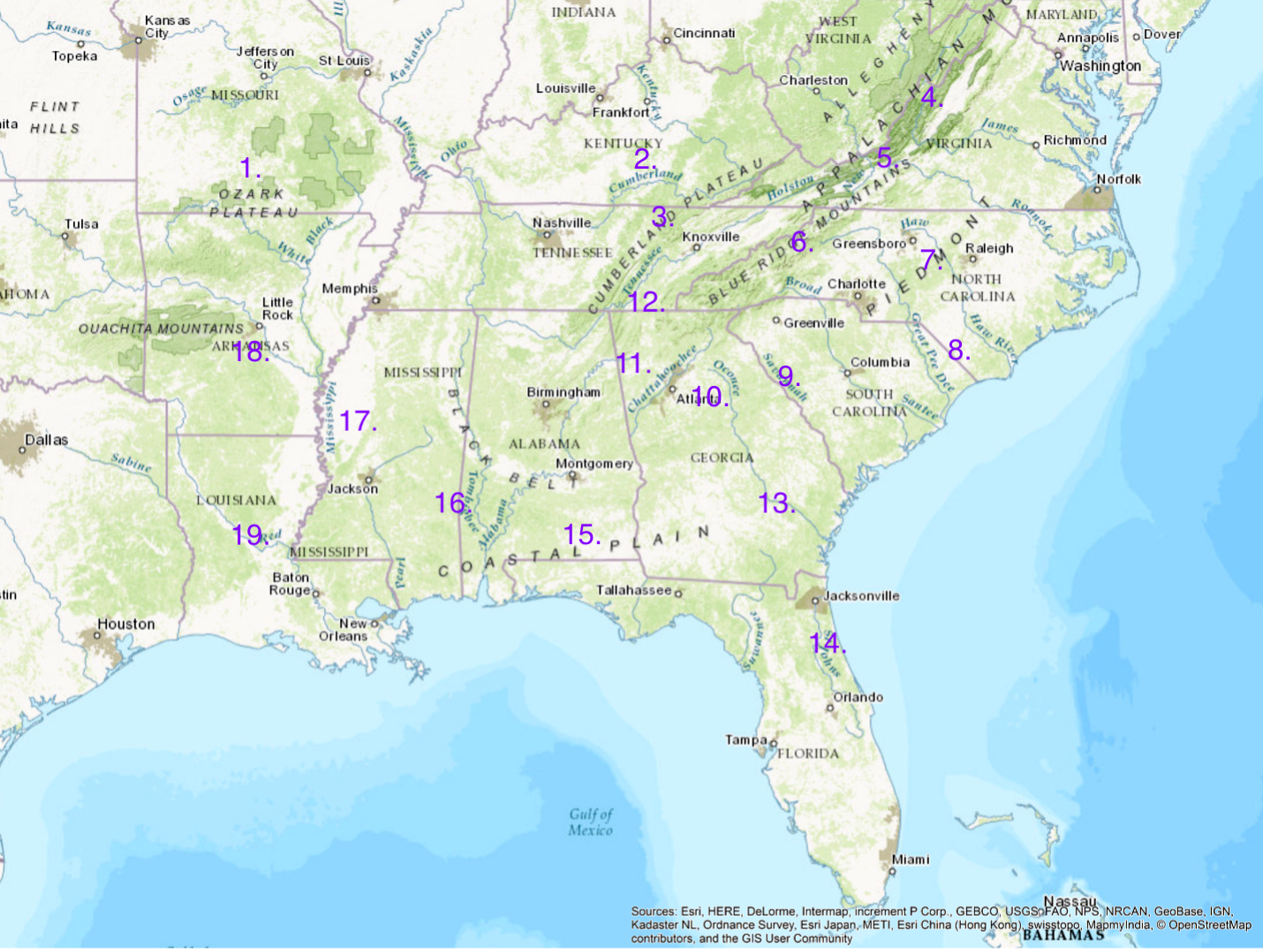
what is number 19.?
red river

pottery quiz(extra credit)
Cape fear Fabric impressed
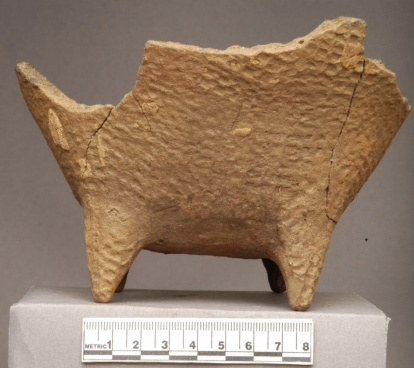
pottery quiz(extra credit)
pigeon check stamped
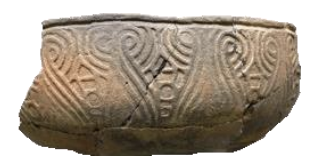
pottery quiz(extra credit)
swift creek complicated stamped
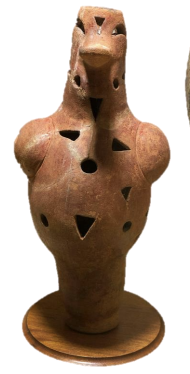
pottery quiz(extra credit)
weeden island plain, embellished
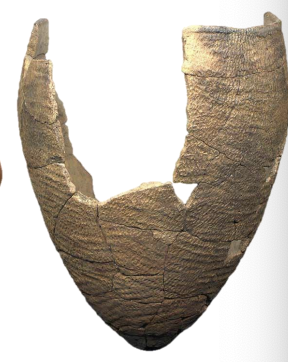
pottery quiz(extra credit)
swannanoa fabric impressed
Essay question one:
What changes distinguish the early, middle, and late woodland periods?
Changes in
subsistence strategies
settlement patterns
tools
social organization
Early woodland:
communities small and mobile relying on seasonally available recources
Early horticulture, along with hunting and gathering, was practiced
Pottery became widespread → Thick and crude
mound-building with conical mounds used for burials
middle woodland
populations grew → more permanent villages '
Long-distance trade networks flourished
pottery improved( thinner and fired more effectively than earlier types)
burial mounds became more elaborate. → Rituals were more complex
late woodland
populations dispersed into smaller settlements, creating more isolation and distinct regional cultures
agriculture was introducing maize, beans, and squash( the three sisters)
The bow and arrow replaced prior hunting tools
Long-distance trade declined compared to the middle period
essay question two:
What is the timing, impact, and significance of maize agriculture in the Southeast?
timing:
maize was introduced to the southeast remaining limited until large scale adoption began
maize becoming a staple crop created a decline in freshwater mussels indicating some sort of environmental changes( also an impact)
impact:
reduced biodiversity
along with beans and squash, these three make a balanced diet which enabled populations growth and more sedentary lifestyles
increased agricultural productivity → rise of hierarchical societies → complex chiefdoms and ceremonial centers
significance:
developed a trade networks and created a surplus storage
environmental adaptability
gradual integration of Mesoamerican knowledge( sharing of culture)
technological and cultivation techniques advancements
essay question three:
What is the significance of the widespread adoption of corn/maize in the southeast? What technologies made this possible?
significance:
economic growth → increased faming activity supported by regional economies → livestock feed
adaptation to climate → adaptable in varying conditions throughout the Southeast → irrigation mitigating and drought sensitivity
diversification → diversity agricultural output in the south
Technologies:
genetically engineered seeds → the adaptation of the seeds to pest- resistant, herbicide-tolerant, and drought- tolerant allow the seeds to cultivate maize in regions that were previously unsustainable for its growth
precision farming systems
improved farming practices
essay question four:
what is the Hopewell interaction sphere and what does it represent?
refers to a widespread network of trade, cultural exchange, and ceremonial interactions.
represents a complex system of social, economic, and ceremonial connections
facilitation of trade networks
cohesion while allowing for regional diversity
not a centralized empire, but more of a loose network of regional societies that shared certain cultural traits
spiritual significance
social stratification
This phenomenon also provides insight into how ancient peoples balanced local traditions with broader cultural connections—a theme still relevant in understanding human societies today.